The School of Paris
AÏZPIRI
BUFFET
DUFY
GEN PAUL
GORRITI
LHOTE
165 worth avenue , palm beach , florida 33480 • (561) 655-2090
32 east 57 th street , 2 nd floor , new york , new york 10022 • (212) 421-5390
WWW.FINDLAYGALLERIES. COM
•
•
•
•
•
The School of Paris
In the early 20th century, Paris became the epicenter of Western art. Painters and sculptors from around the world flocked to the city, giving rise to Fauvism, Cubism, Surrealism, and Modern Art as we know it today.
The School of Paris exhibition presents a select group of artists that were instrumental to the artistic developments of this period, along with others that benefited from and furthered their vision: Andre Lhote, Jean Dufy, Gen Paul, Paul Aïzpiri, Bernard Buffet, and Gilles Gorriti. Their works encompassed multiple themes and covered a wide range of styles; from the dynamic colors of Fauvism to the revolutionary forms of Cubism and the otherworldly compositions of Surrealism. The School of Paris took advantage of developments from a variety of sources as it forged a path that art would follow through the remainder of the century and into present day.
We invite you to our Palm Beach gallery to view The School of Paris.
PaulPaulAïzpiri Aïzpiri(1912 -
Aïzpiri Aïzpiri - 2016)
Paul Aïzpiri Born May 14, 1919, Paris, France, belongs to the special category of “Mediterranean Artist,” painters (such as Picasso, Matisse, and Chagall) whose works seem to glow with the sun of Southern Europe. Perhaps, with a mother from Italy and a father from the Spanish Basque country, the French-born Aïzpiri was destined to view the world in brilliant shades of azure, carmine and gold. His busy, breathless brushwork and bright colored palette, summon up Riviera promenades,Venetian canals, circus performers, and bouquets of exotic blossoms, pulsing with energy and a relentless joie de vivre.
Aïzpiri’s canvases are part Impressionist, part Expressionist, part Cubist, but always figurative. They are easily accessible and enormously popular. Some art critics contend they are beautiful surfaces with little depth. But there is a deeper side to Aizpiri’s work, rooted in his life experience.
Born in Paris in 1919 with a Basque background, Paul Aizpiri studied painting at L’Ecole des Beaux-Arts. Public acknowledgement of his talent began in the 1940’s and progressed from many exhibitions held in various countries around the world. He won the National Grand Prix at the Venice Biennale in 1951.
Aizpiri’s passion for nature and families are self-evident within his artworks. The bold brushstrokes and bright colored palette in his fantastical figurative paintings are symbols of his joy and happiness in life. His works are painted poetry filled with a glow of love with such motifs as children, bicycles, airplanes, birds, fish and the sun, flying over the skies of Paris, Saint Tropez and Venice.
Aïzpiri
Port de Ste. Maxime
Paul
|
oil on panel | 19 11/16 x 19 11/16 in. | FG© 139628

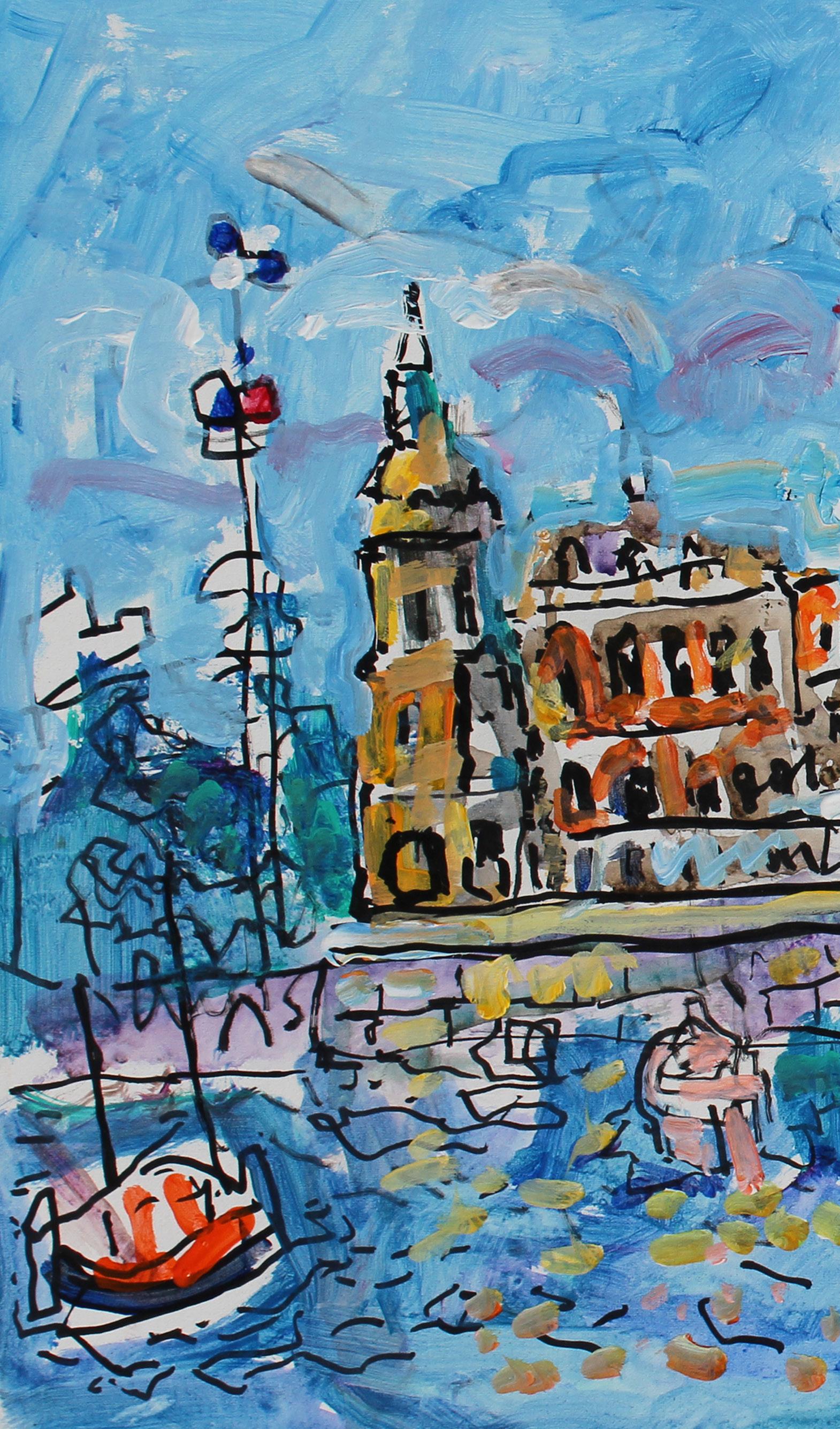 Paul Aïzpiri
Paul Aïzpiri
La Conciergerie, Paris oil on canvas | 13 x 21 5/8 in. FG© 136390
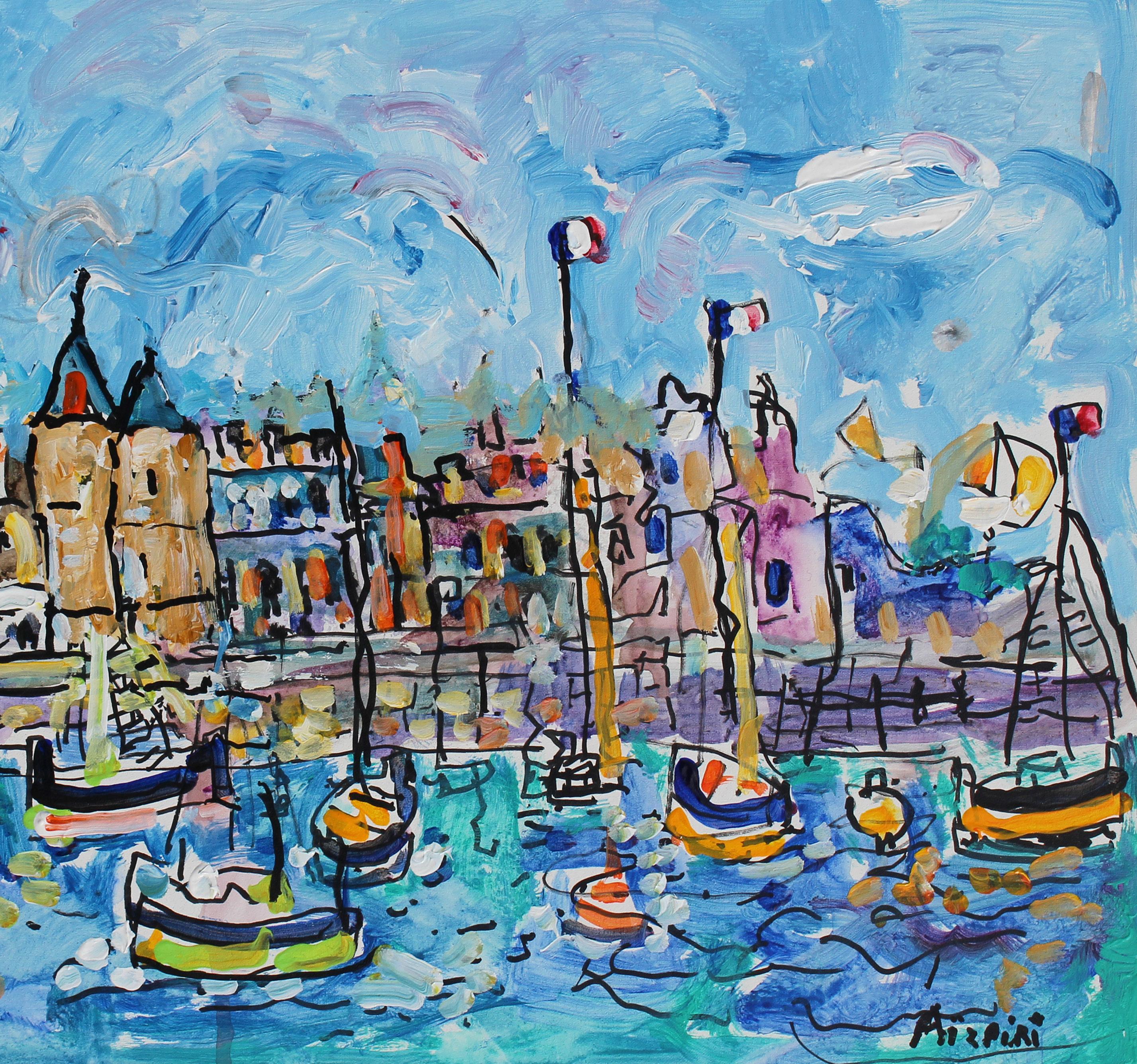

Paul Aïzpiri Fleurs dans un vase, 1930 acrylic on canvas | 36 1/4 x 28 3/4 in. FG© 139989
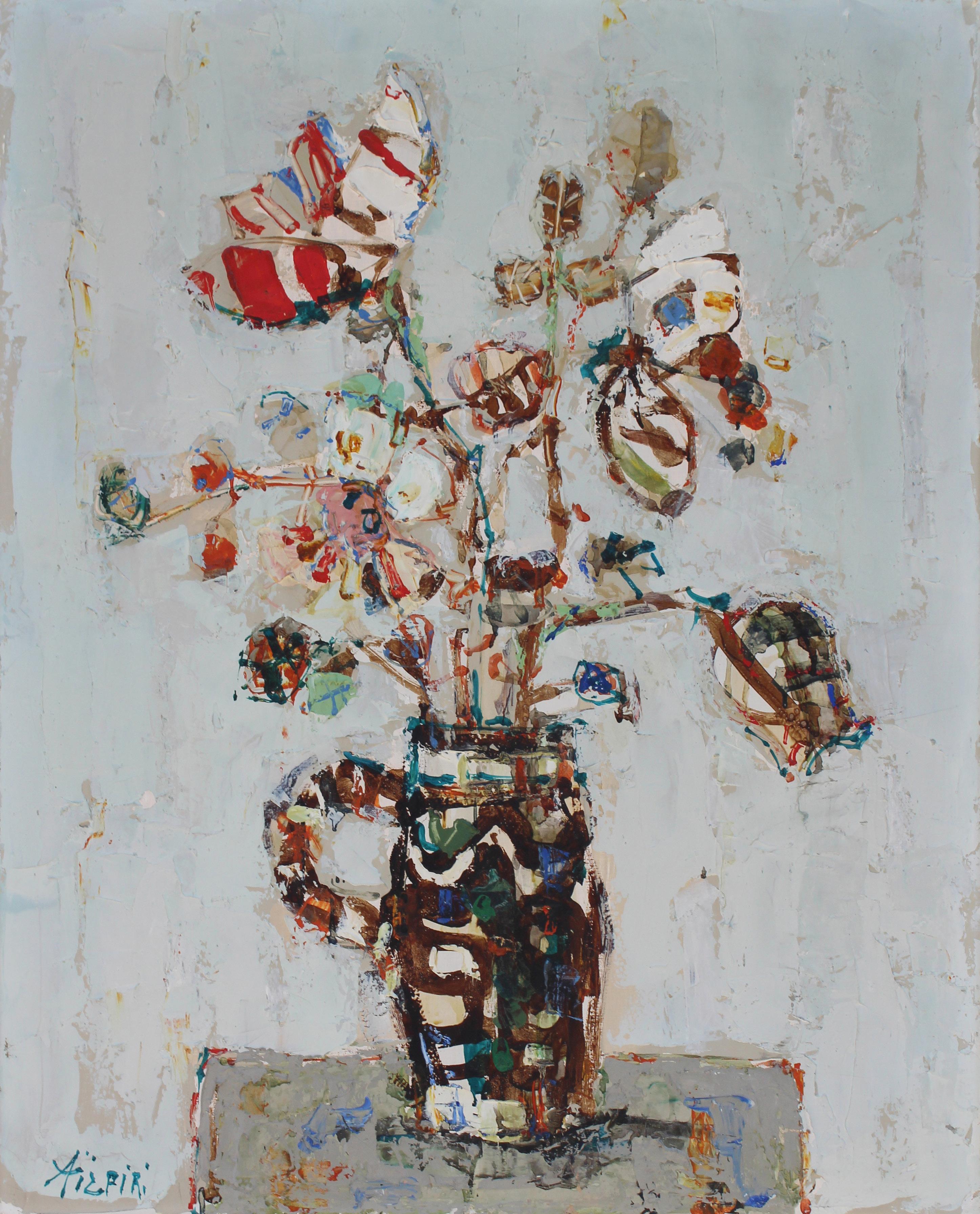
Paul Aïzpiri |
Nature morte a la pipe et aux carte
gouache on paper | 29 3/8 x 41 in.
FG© 140133

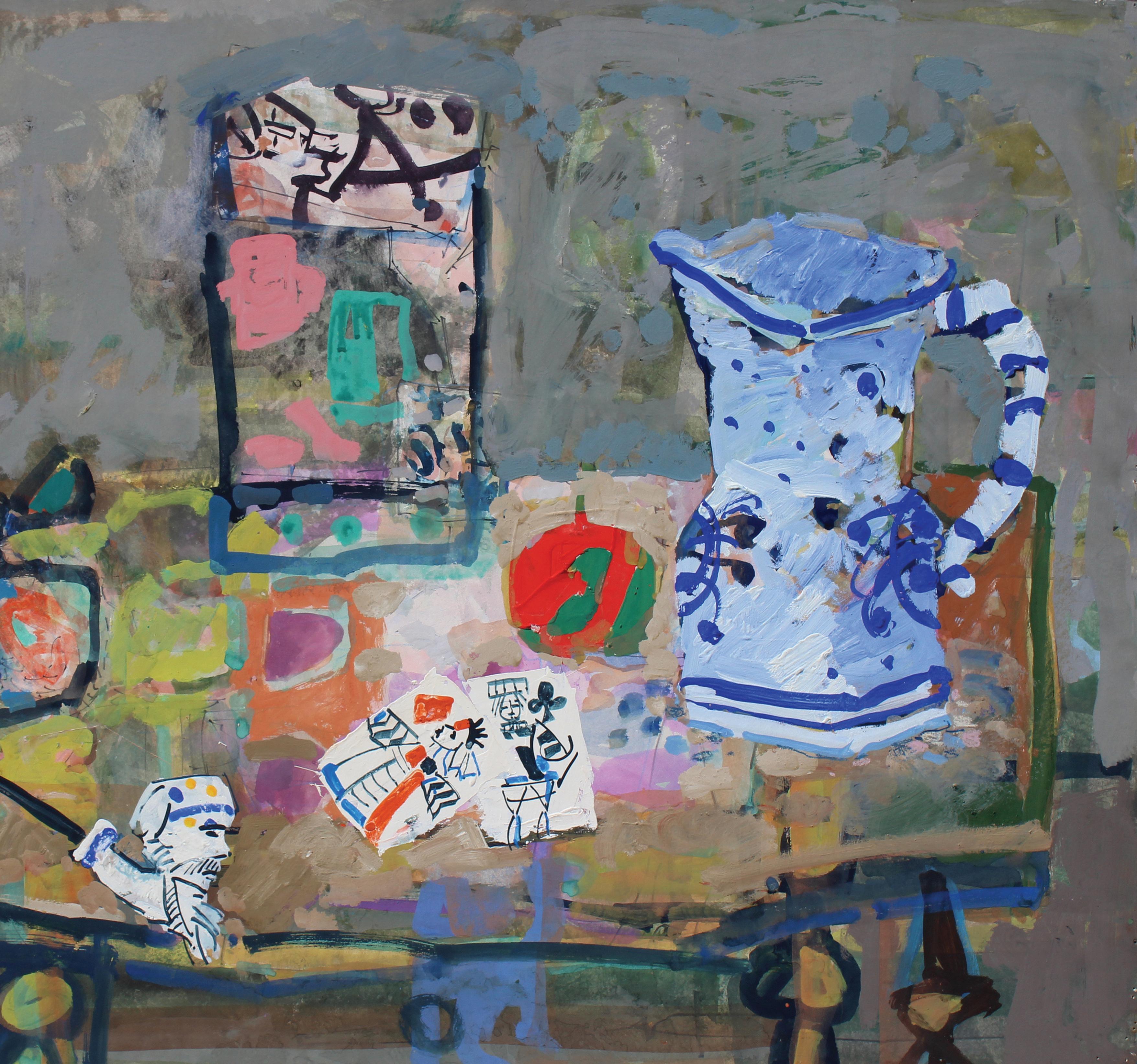
Bernard Bernard (1928 -
Bernard BuffetBernard Buffet
- 1999)
Bernard Buffet was born on July 10, 1928, in France. In 1944, he entered the Ecole des Beaux-Arts, but he soon left the school to work on his own and quickly affirmed his own exceptional personality. He had his first exposition at the Salon des Moins de Trente Ans (The Salon for Those Under Thirty) in 1946. In 1947, Buffet met Dr. Maurice Girardin, who became his first important collector. Buffet also exhibited at the Salon des Indépendants and the Salon d’Automne. In 1948, Buffet won the Prix de la Critique and continued at least one important exposition each year until shortly before his death.
In the 1950s, Bernard Buffet was considered the principal figurative artist in Paris. During this period, he was influenced by the miserabilism movement: his compositions, all grays and dull whites, had a somber mood. Buffet’s subjects have a tremendous range, especially in later works, and include stilllifes, interior scenes, and views of such cities as New York, Paris, and London.
Buffet received many awards, and his work was exhibited extensively worldwide during his career. In 1955, he received the first prize in a referendum conducted by the Review “Connaissance des Arts” and was designated first out of ten best painters of the post-World War II era. In 1958 the Galerie Charpentier staged a retrospective show called Cent Tableaux of the paintings, which had brought Buffet such outstanding success in the brief period since the end of World War II. He was honored with the Chevalier de la Légion d’Honneur in 1971 and In 1973, the Musée Bernard Buffet was opened in Surugdaira, Japan.
Buffet’s paintings for the Chapel of Chateau d’Arc representing scenes from the life of Christ are permanently exhibited in the Modern Art Galleries of the Vatican Museum. Japan and Germany dedicated monoraphical museums to his work. His work is also represented in many foreign museums and private collections in the Musée d’Art Moderne and the Petit Palais in Paris, the Museums of Grenoble and Lille.
Findlay Galleries introduced Buffet to the American market in 1959 at their Chicago gallery and continued to represent the artist until his passing in 1999. His works were also exhibited at the inaugural reception for Findlay Galleries, New York, in 1964 at 17 East 57th Street.
Bernard Buffet | Le Cirquegouache on paper | 25 3/4 x 19 5/8 in. | FG© 139905
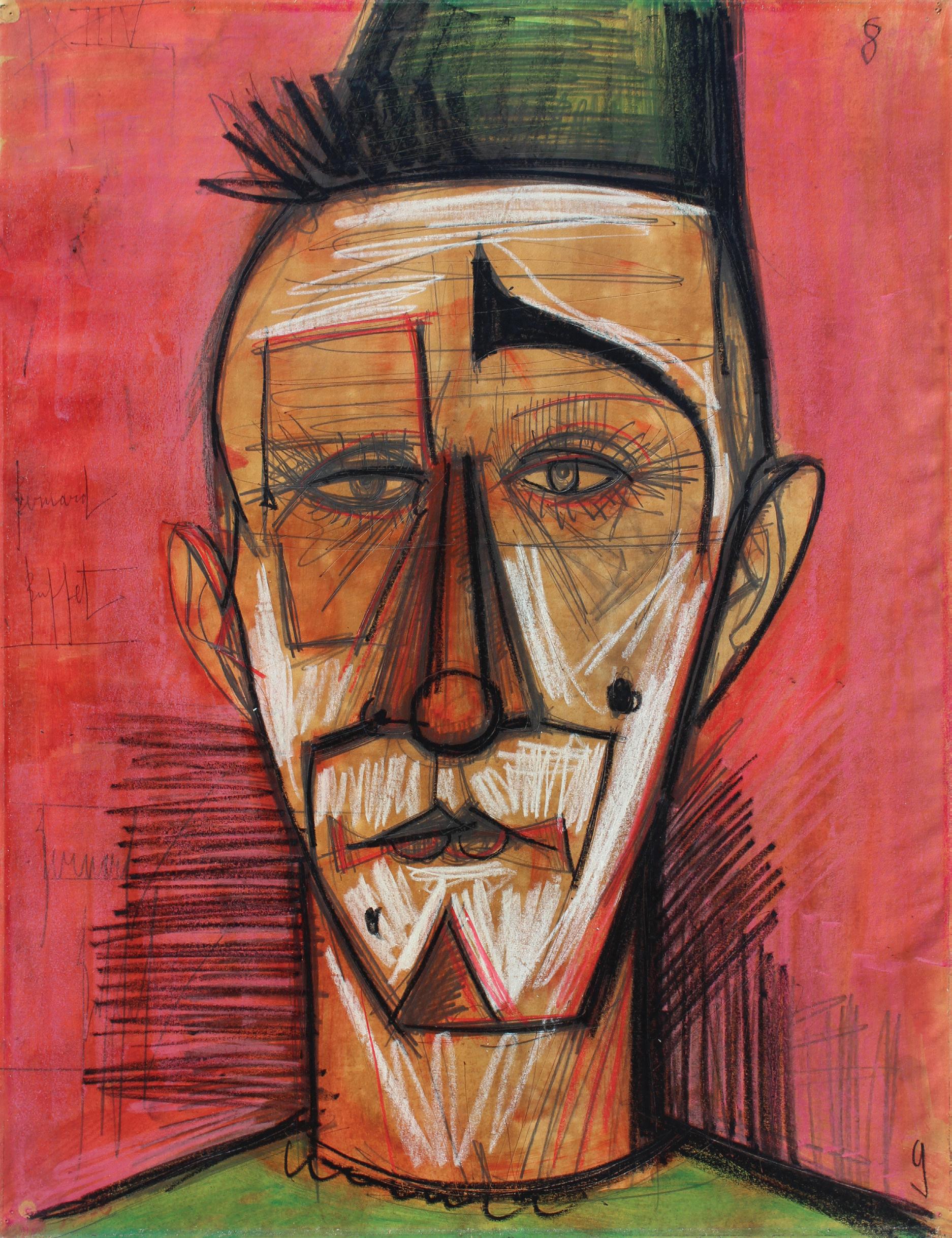
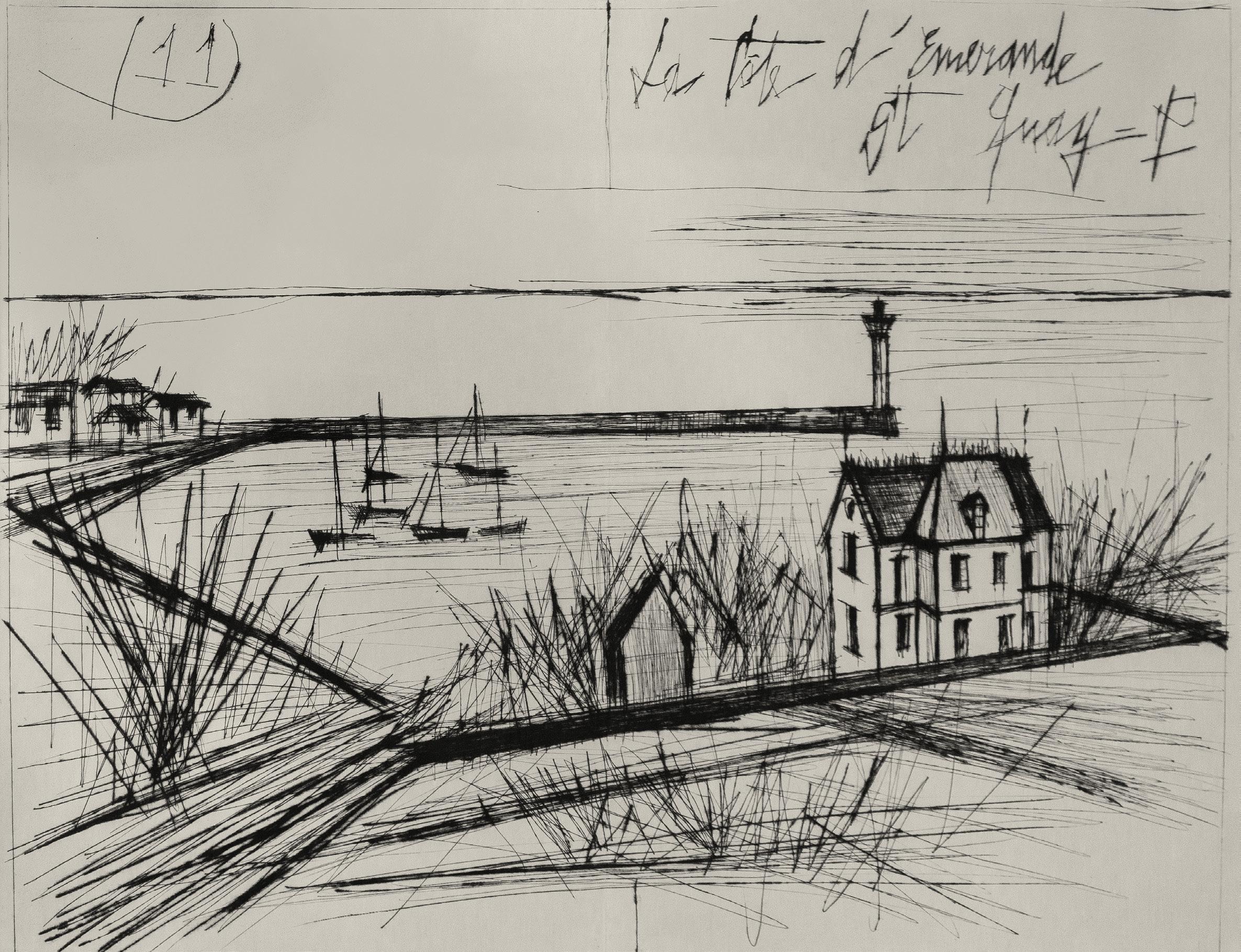
Bernard Buffet | La cote d’emeraude (11/15), 1962 etching on arches paper | 33/100 | 19 7/8 x 25 7/8 in.

Bernard Buffet | La Coiffe (6/15), 1962 etching on arches paper | 33/100 | 19 7/8 x 26 in.

Bernard Buffet | Rothéneuf (4/15), 1962 etching on arches paper | 33/100 | 19 7/8 x 26 in.
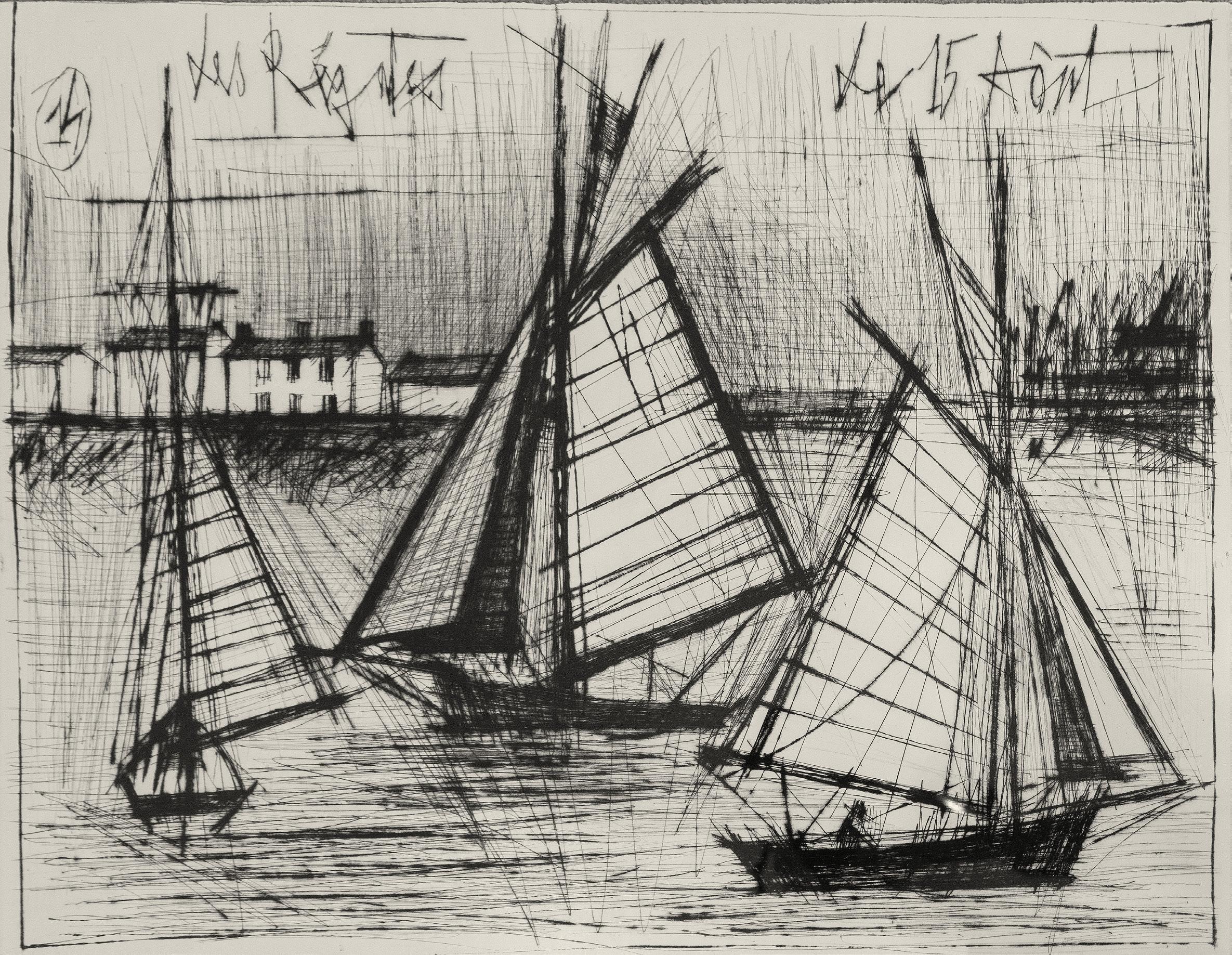
Bernard Buffet | les regates (15/15), 1962 etching on arches paper | 33/100 | 19 7/8 x 26 1/8 in.

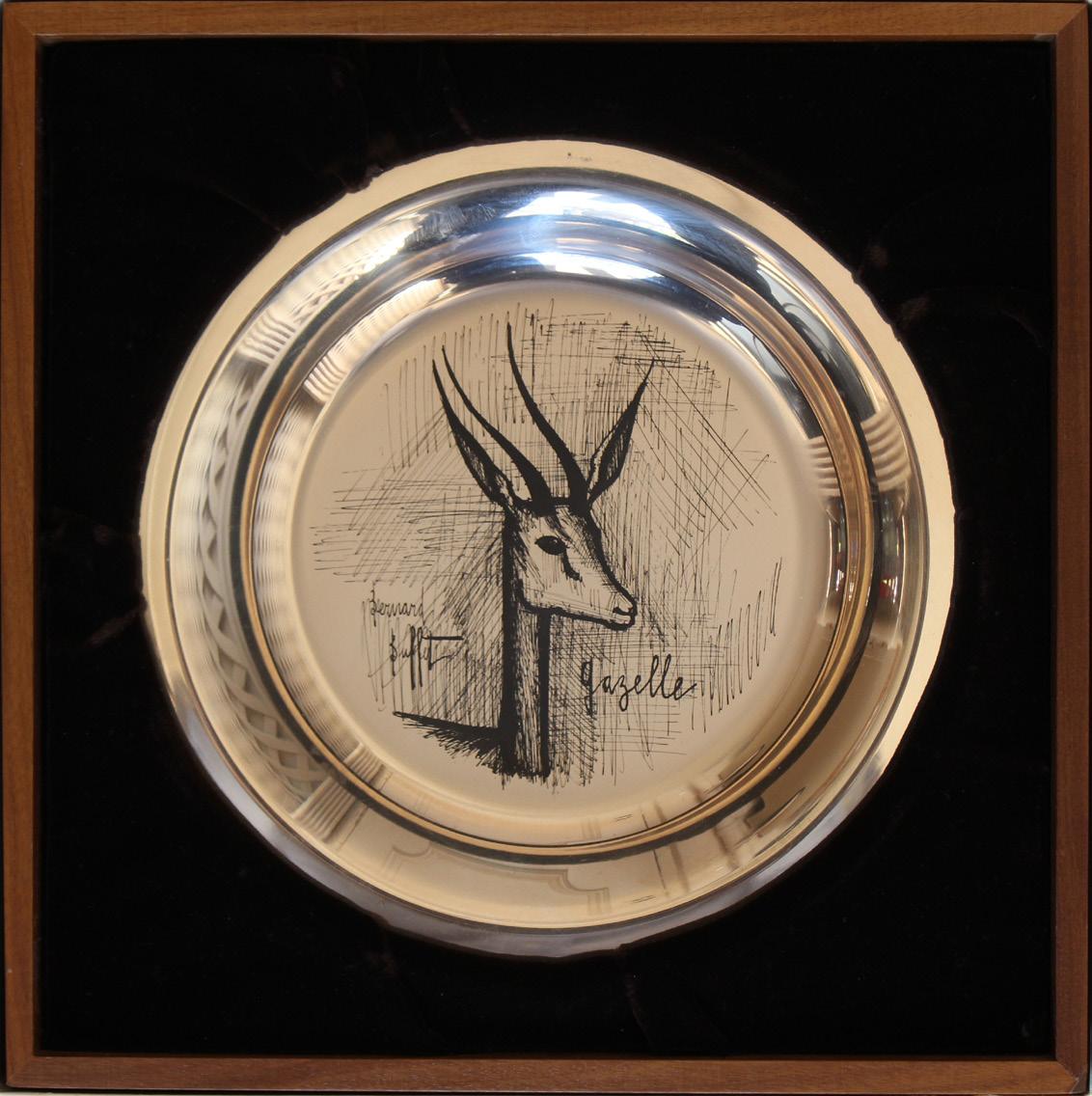
 Bernard Les especes menaceese, sterling silver with 7 7/8 in. (each)
Bernard Les especes menaceese, sterling silver with 7 7/8 in. (each)


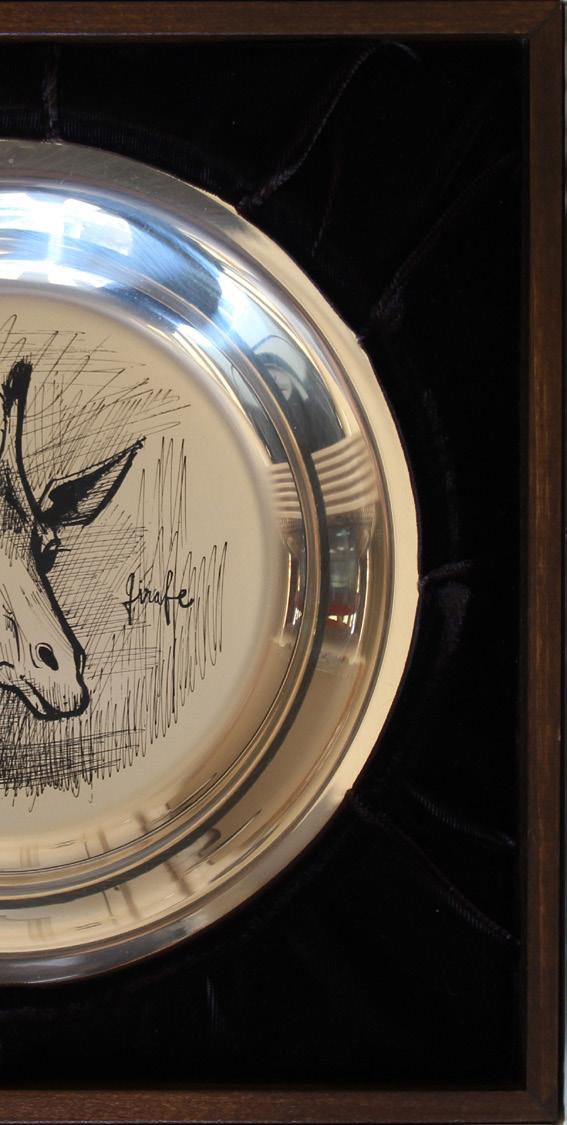
Bernard Buffet menaceese, 1975 dry point etching | FG© 138696
Jean Dufy
Jean Dufy
(1988 -
Dufy Dufy - 1964)
Jean Dufy was born in Le Havre, France on March 12, 1888. A family of nine children, the Dufy’s were comparatively poor. However, this did not prevent them from pursuing artist endeavors, and the whole family loved art and music.
Jean’s brother, Raoul, eleven years older than him, studied at the Ecole des Beaux-Arts of Le Havre. When he was the same age, the younger boy followed in his brother’s footsteps, also enrolling in the Beaux-Arts of Le Havre. Inevitably, after his studies in Le Havre, Jean went to Paris to study under Othon Friesz. Raoul had already been in Paris for some time, becoming close acquaintances with many big artists of the day. While Jean’s association with the same artists was primarily as a student, he gradually won the friendship of these older artists.
One shadow fell over these artistic friendships, a shadow that darkened the relationship between the two brothers, Raoul and Jean. Raoul had been commissioned to produce an immense mural, nearly 200 feet long and 32 feet high, for the Palace of Electricity at the 1937 Paris World’s Fair. He enlisted the aid of his brother Jean and that of André Robert. The mural consisted of a series of panels depicting a lively, overall survey of the role of electricity in our lives. In spite of its size, within two weeks after the preliminary research, groundwork and designs had been completed, the entire painting was executed. It seems that Jean played a very large part in the projection of this immense painting, so much so that he felt he should receive equal credit for it with Raoul. Instead, Raoul received all the acclaim for it when the World’s Fair opened. Wounded and, perhaps, somewhat embittered by this experience, Jean withdrew from the Paris art scene and went to live quietly with his wife in the region of the Loire, one of the most serene and beautiful areas of France.
Though he was a member of the Salon d’Automne and exhibited periodically in it, from this time on Jean Dufy remained aloof, working alone, shunning contact with other artists. However, he lived joyously, and continued to work on his passion – his art. He and his wife made long trips to Paris and the coasts of France, to Greece, Spain, Italy, Portugal, Sweden and Denmark. Wherever he went, his keen eye and retentive memory absorbed all he saw, and pencil sketches, pen and ink drawing, gouaches and oils resulted, all filled with his own exuberant wit and delight in the variety of the world’s beauty and men’s activities.
In his watercolors, gouaches, and oils, the eye is caught at once by his brilliant color, his daring juxtaposition of slashing strokes of flashing tones of color, his free handling of startling shades. The surface ease with which he handled paints concealed the firm, strong composition underlying all his work. To study his pencil sketches or pen and ink drawings is a revelation, for in them one becomes aware of the masterly draftsmanship, the crisp calligraphic manner, and the absolutely controlled drawing underlying all his paintings.
These qualities are visible in all Jean Dufy drew or painted, and his range of subjects was wide. Scenes of Paris; circus life; the sea, ships, and harbors; flowers; race tracks; concerts, still lifes, landscapes; occasional farm scenes; hunting scenes; riders in the Bois de Boulogne - all took on an individual, distinctive life, and vivacity under his brush.

Jean Dufy | Le Pont Alexandre III oil on canvas | 15 x 18 in. | FG© 121698
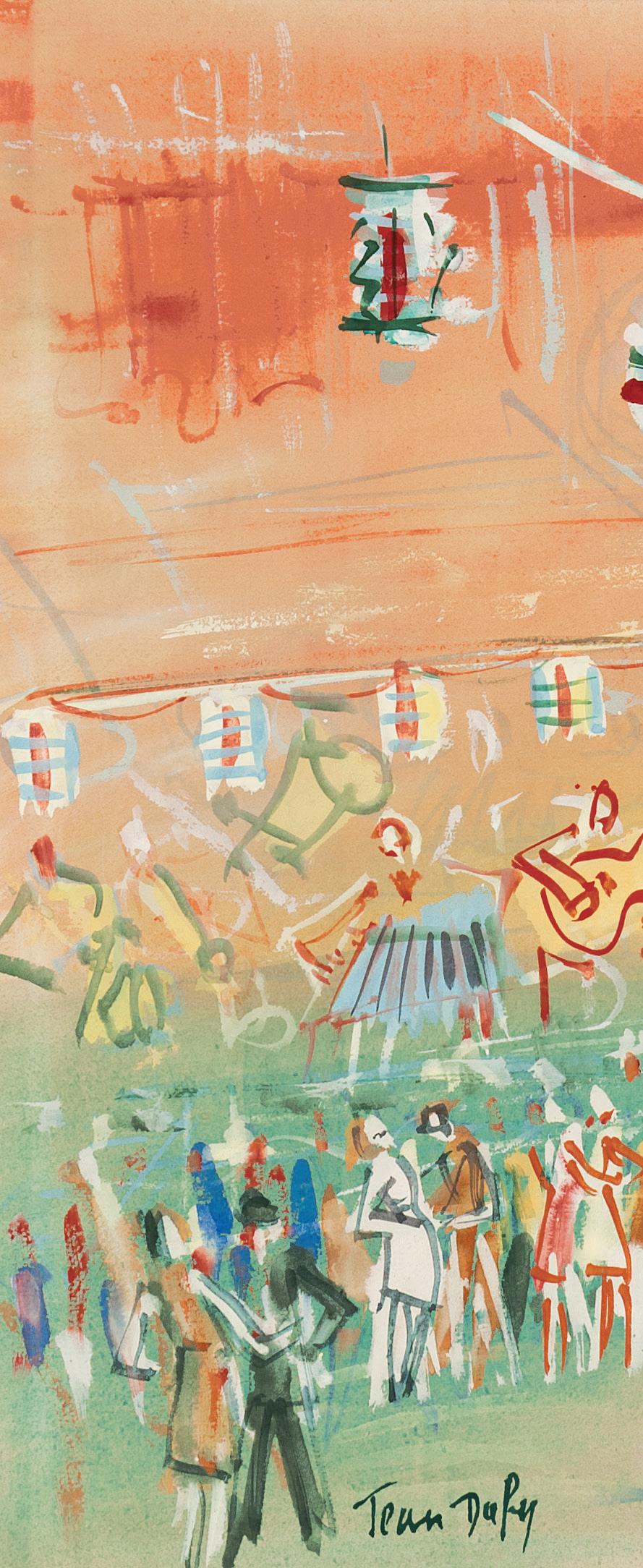
Jean Dufy | Bal populaire gouache & watercolor on paper 16 7/8 x 25 in. FG© 135725
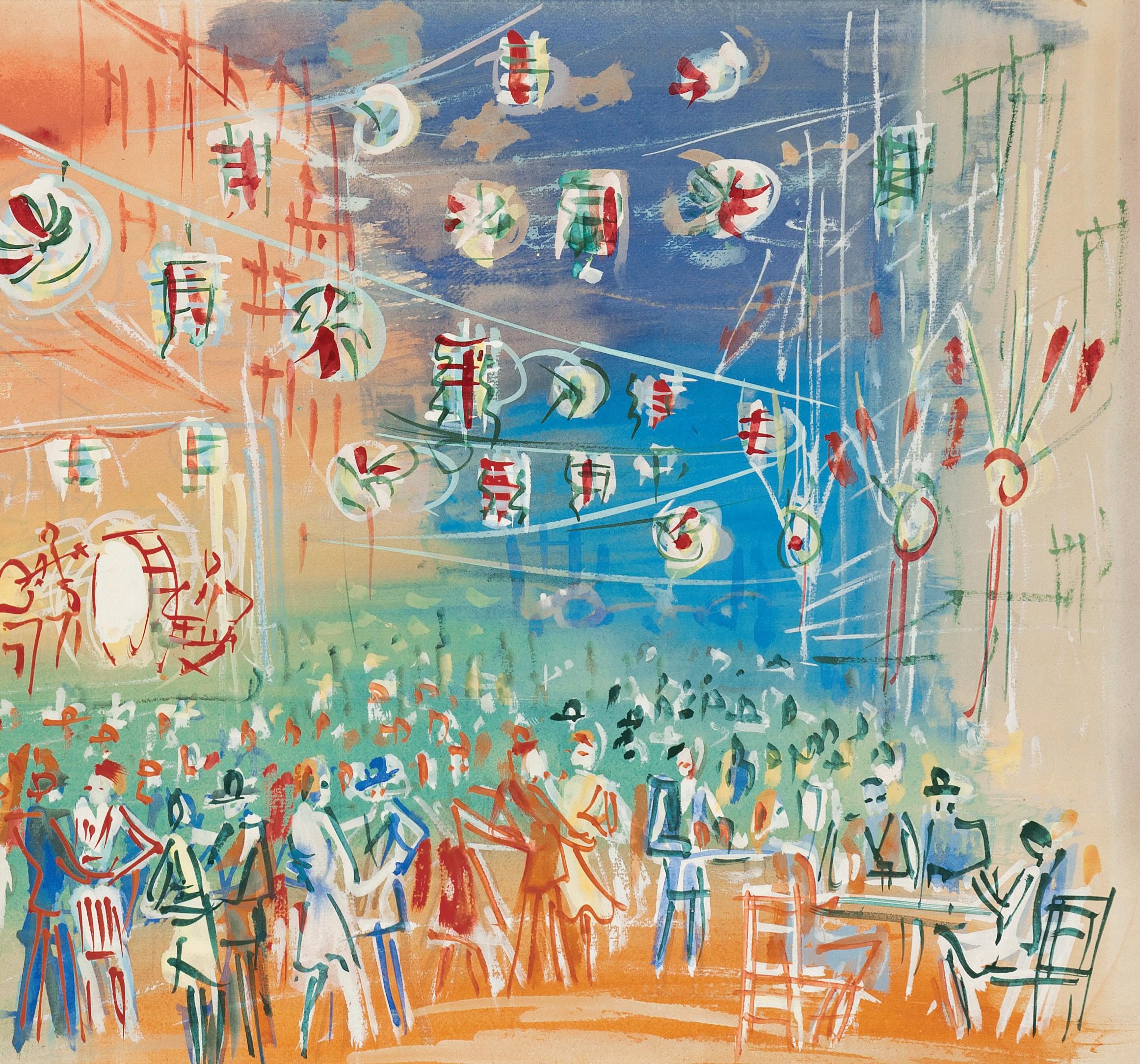
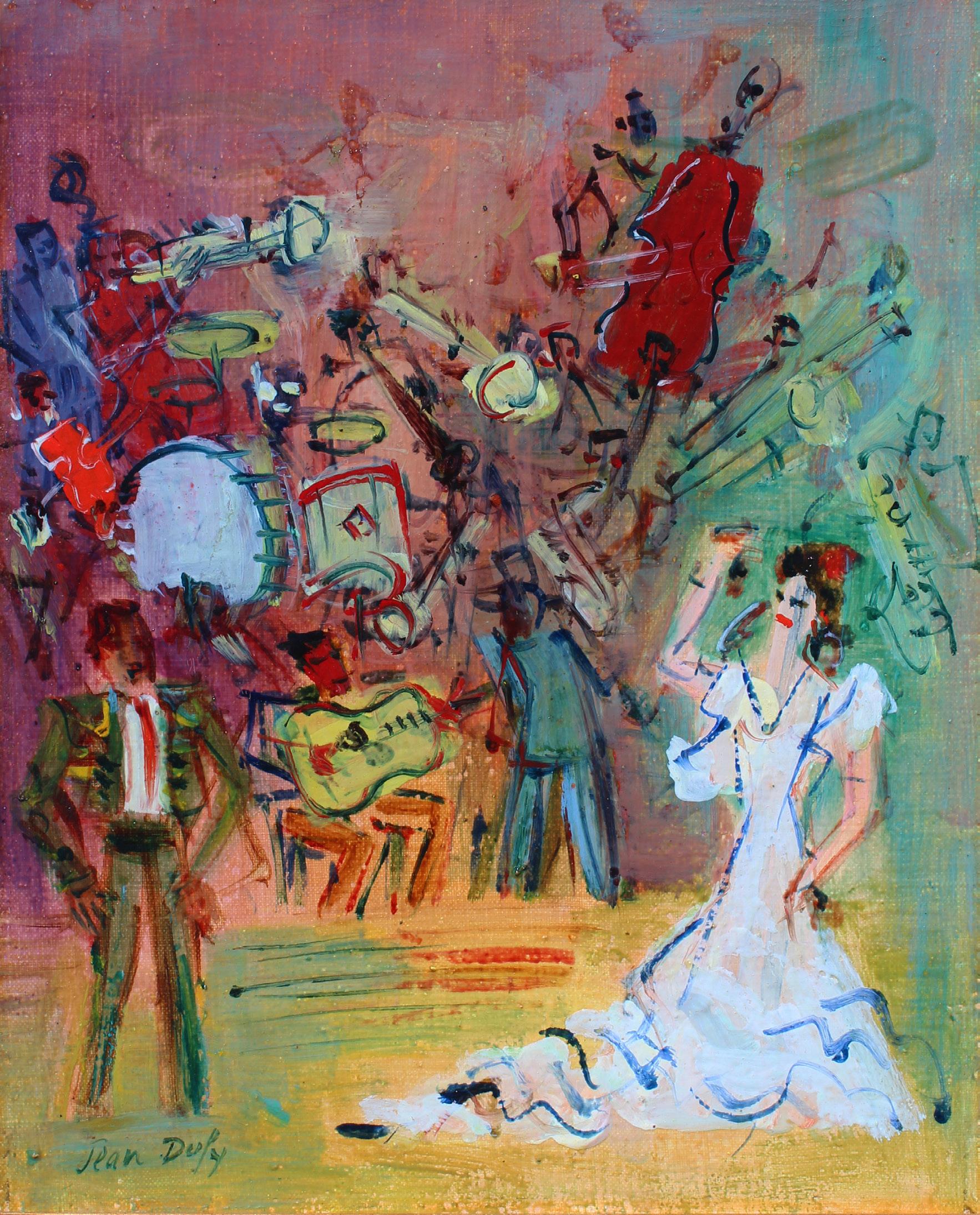

(left) Jean Dufy | L’Andalouse oil on canvas | 16 1/8 x 12 7/8 in. | FG© 139920 (right) Jean Dufy | Caleches et Cavalier gouache on paper | 12 1/2 x 19 in. | FG© 138172
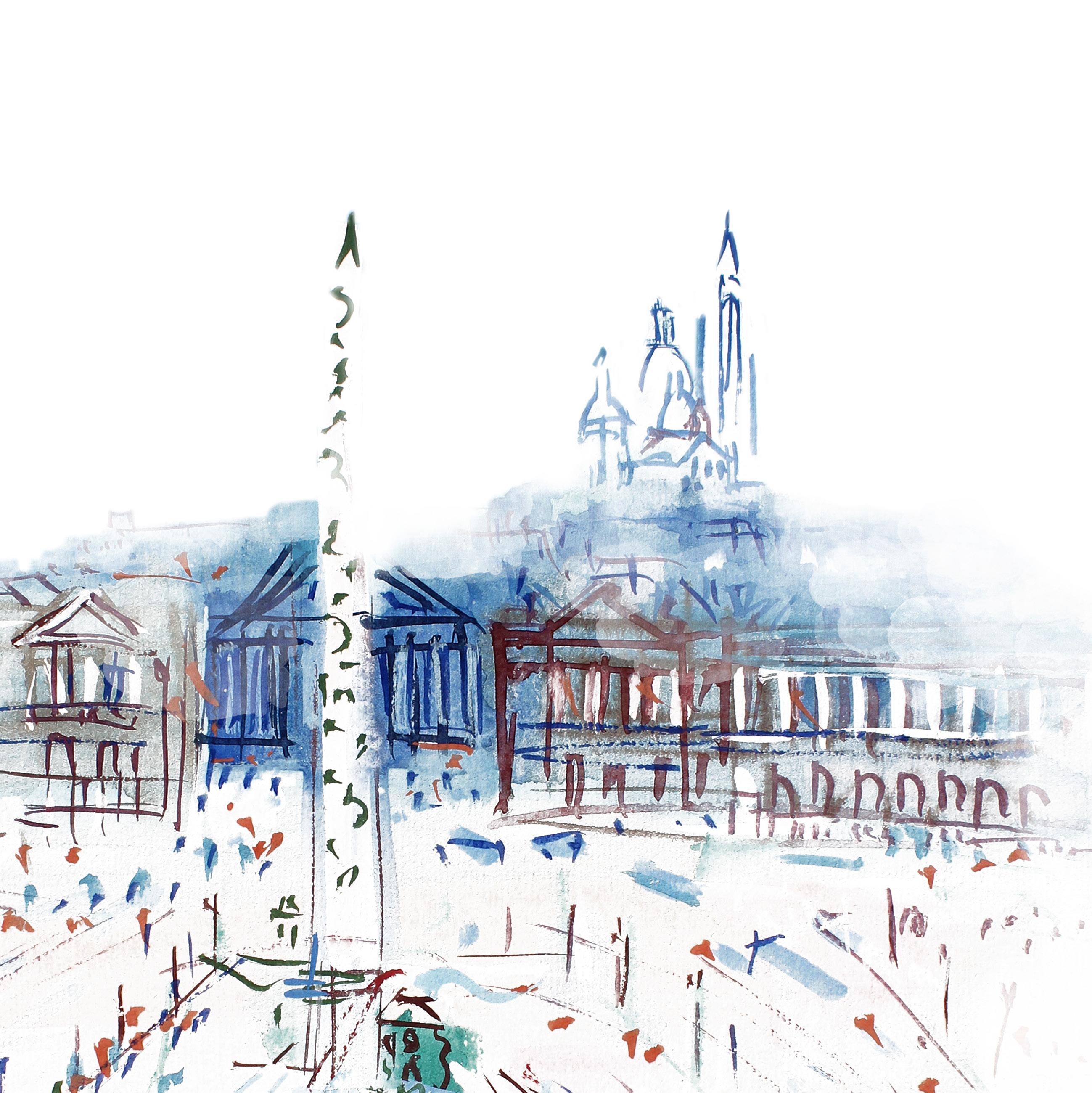
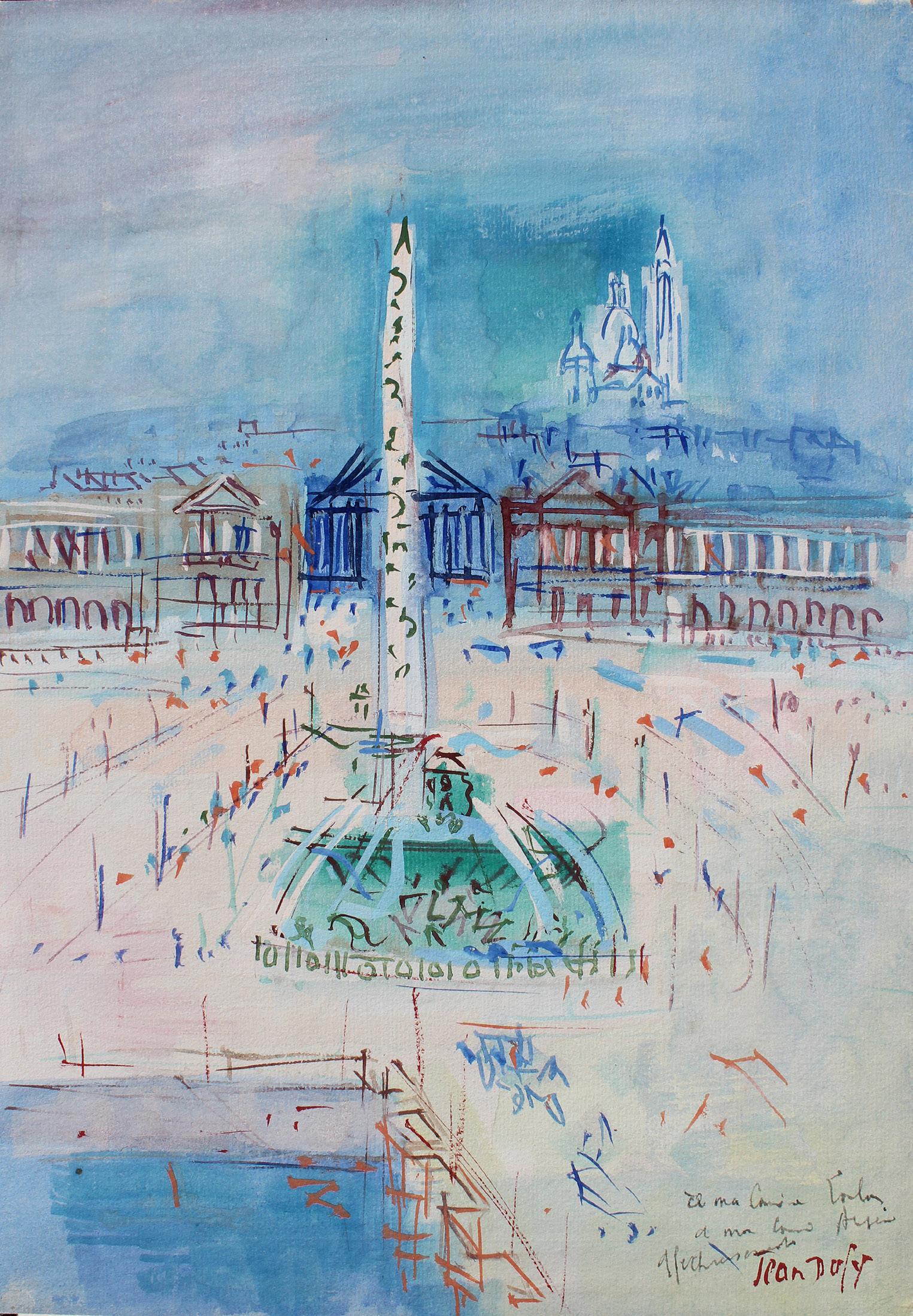
Jean Dufy | Place de la Concorde,1960 watercolor & gouache on paper | 16 1/4 x 10 3/4 in. | FG© 140214

(cover image) Jean Dufy | Place du Tertre gouache & watercolor on paper 18 3/4 x 22 1/2 in. FG©140519

GenGen (1895 -
PaulPaul
- 1975)
Eugene Paul, (Gen Paul) was born in a house in Montmartre on July 2, 1895. The painter and engraver began his artistic career at a young age, drawing and painting often as a child. However, when his father died in 1910, Paul was forced to find work to support himself and his family. Luckily, the young Paul found a job working on decorative furnishings, and was able to continue to be creative and artistic. At the outbreak of World War I Paul joined the French army, and was subsequently wounded, losing a leg. It was only then, during his recovery, that Paul turned back to the love of his childhood – painting.
Gen Paul found himself constantly inspired by his surroundings. At the time of his youth, Montmartre was a hub of creativity, luring talented painters, writers, poets, and musicians from all over the world. Gen Paul was able to interact with and befriend many of the avant-garde painters of his time, including Juan Gris, Utrillo, and Vlaminck. He befriended artist Jean Dufy, and the two often inspired and challenged each other to create newer, better work. Against this heavily artistic backdrop, Paul began to develop his own signature style, a dynamic new form of expressionism.
Fascinated with jazz, Paul traveled through the U.S., from New York to New Orleans and on to California, discovering subjects that begin to appear in his paintings. His style broadened, and he began to solidify his place in the art world. Through his use of gestural brushstrokes, Paul created inherent motion within his works, leading many art historians to name him the first action painter and a precursor to the abstract expressionists of the 1950s. Even his later works, made during a period of heavy alcoholism, feature a rhythm within the strokes that makes them easily identifiable as Gen Paul pieces.
Gen Paul never received any formal training, yet he was able to make a living from his art for almost 60 years, even achieving such honors as being awarded the Legion of Honor in 1934. Only in 1964, at the age of 69, did Paul stopping painting. He could not, however, keep himself from creating in some way, and continued to draw and produce lithographs until his death in 1972.
Gen Paul | Le Clown Violiniste pastel on paper | 4 15/16 x 9 13/16 in. | FG© 136382

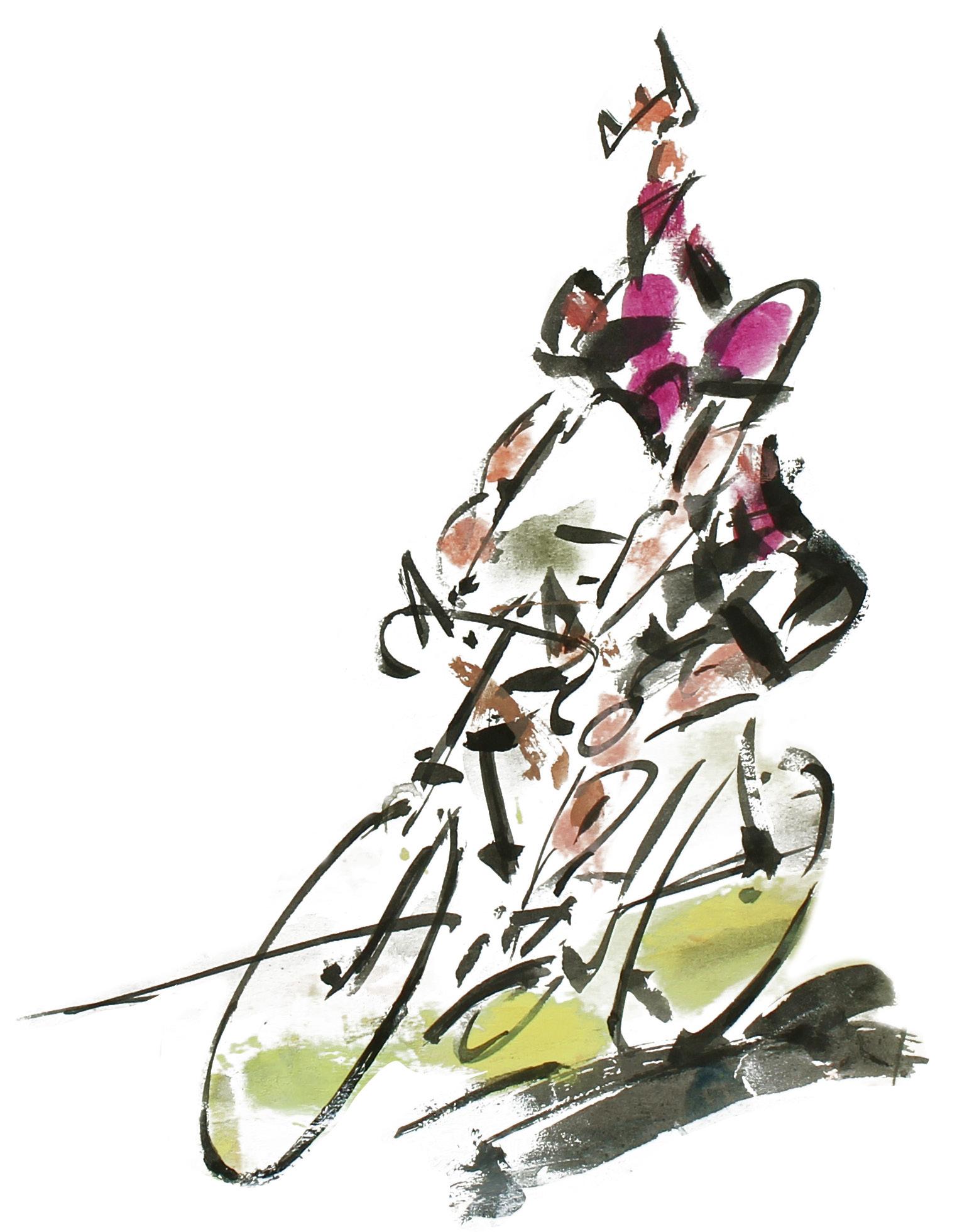
Gen Paul | La course cyclist watercolor and gouache on paper 18 3/4 x 24 1/4 in. FG© 140119
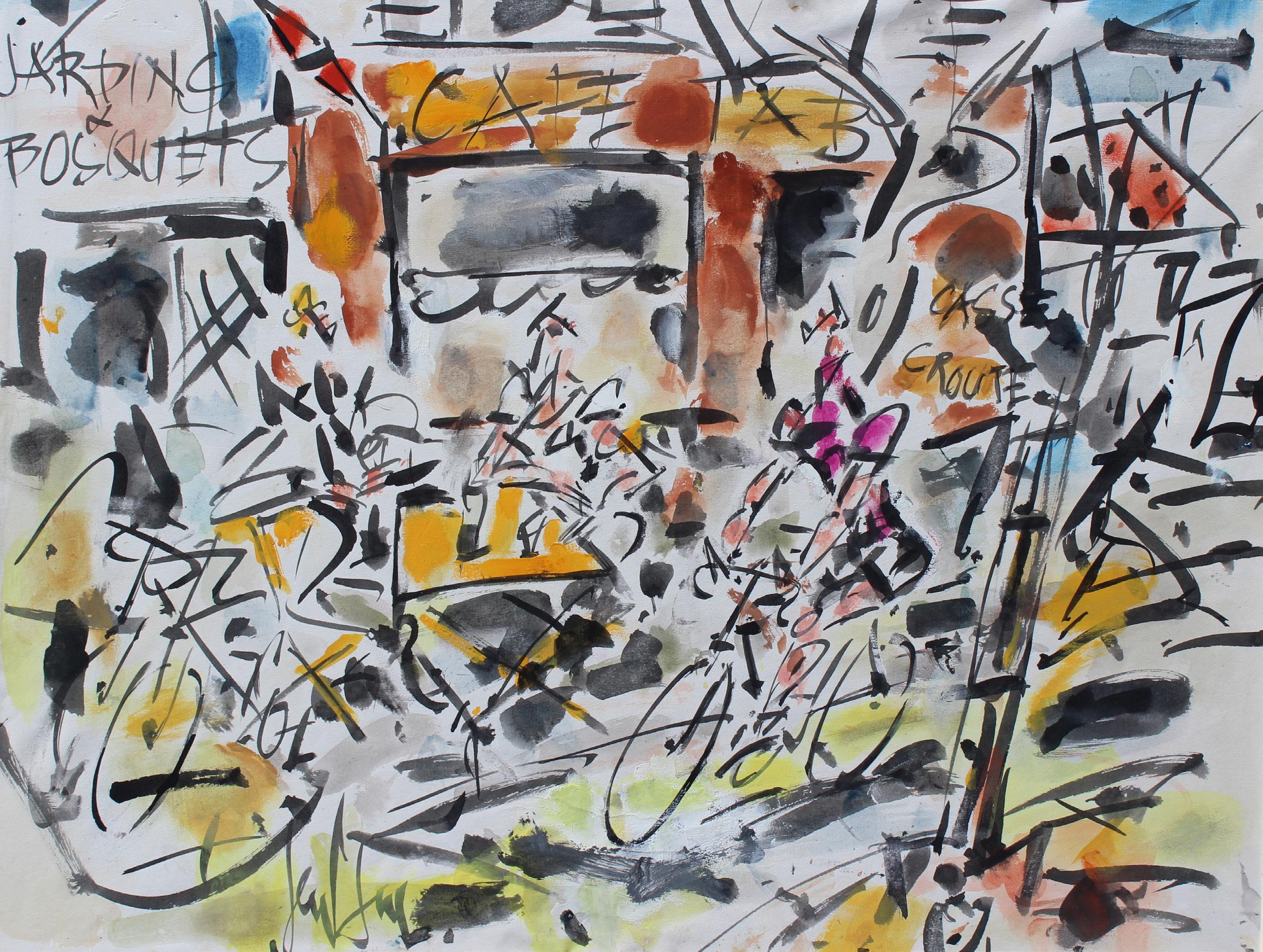
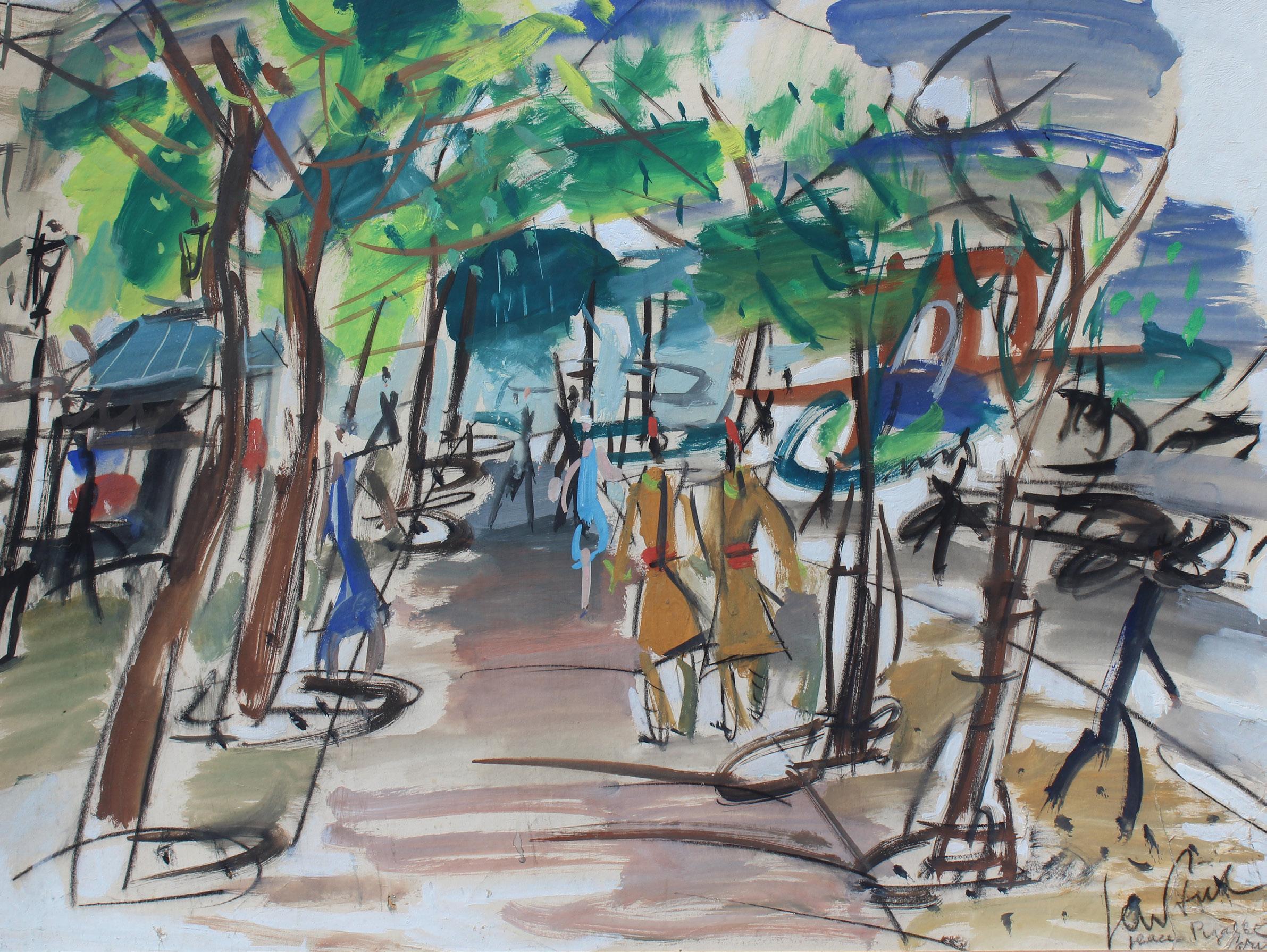
Gen Paul | Paris, Place Pigalle gouache and pencil on paper | 18 3/4 x 25 in. | FG© 140077
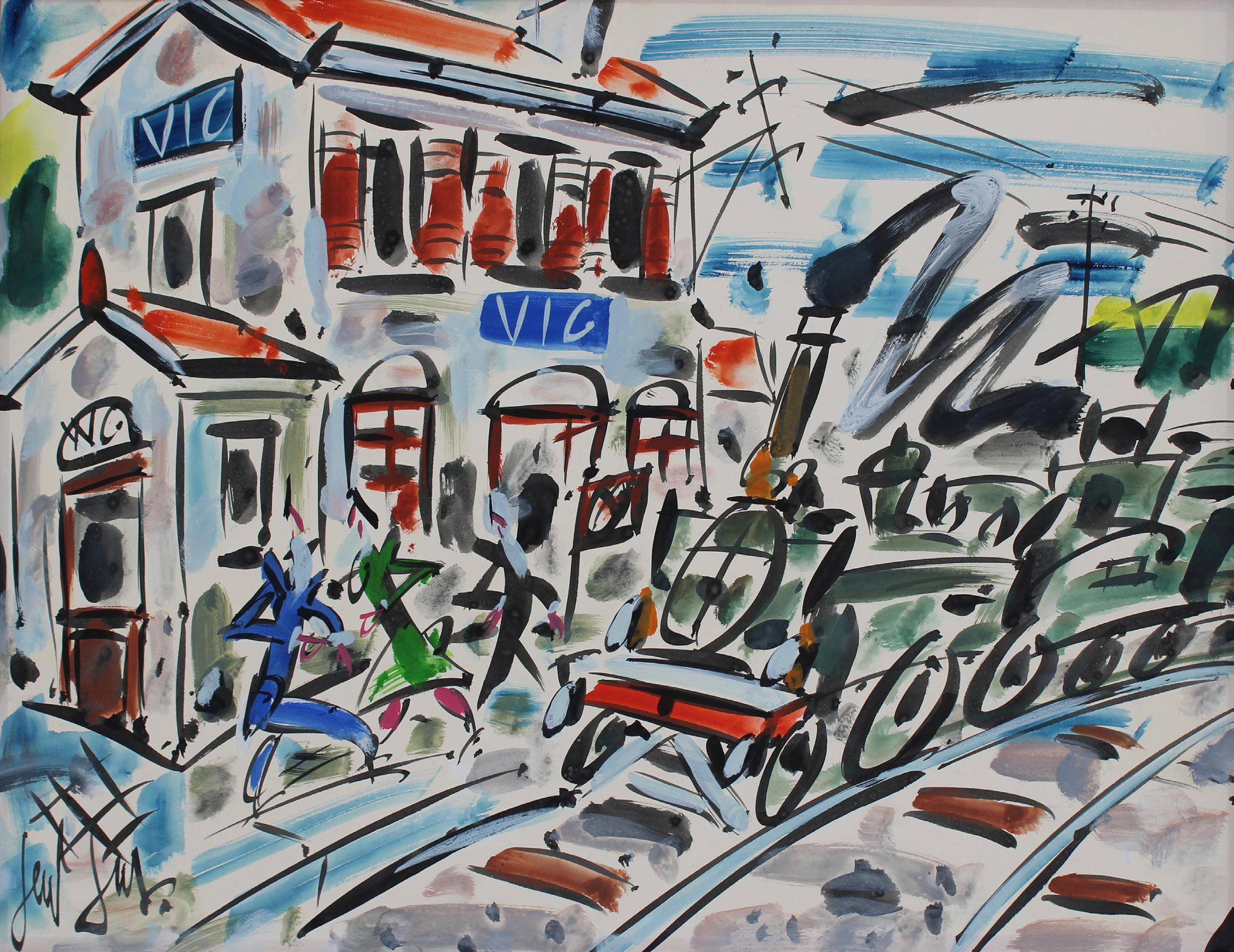
Gen Paul | La gare de Vic, 1970 gouache on paper | 19 3/4 x 25 1/2 in. | FG© 139997
devant le Moulin Rouge
Gen Paul Caleche
oil on canvas | 28 3/4 x 36 1/4 in. FG© 136819
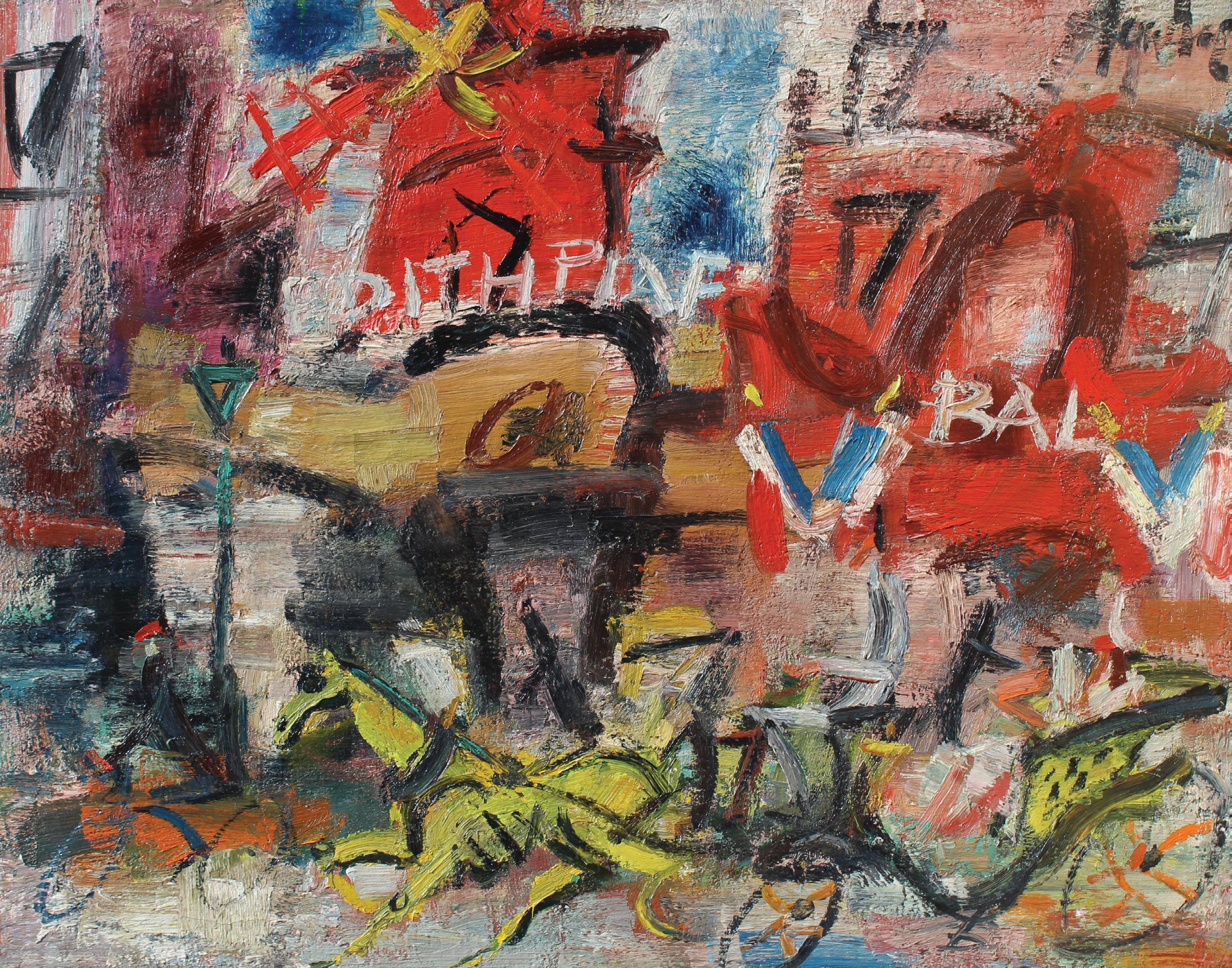
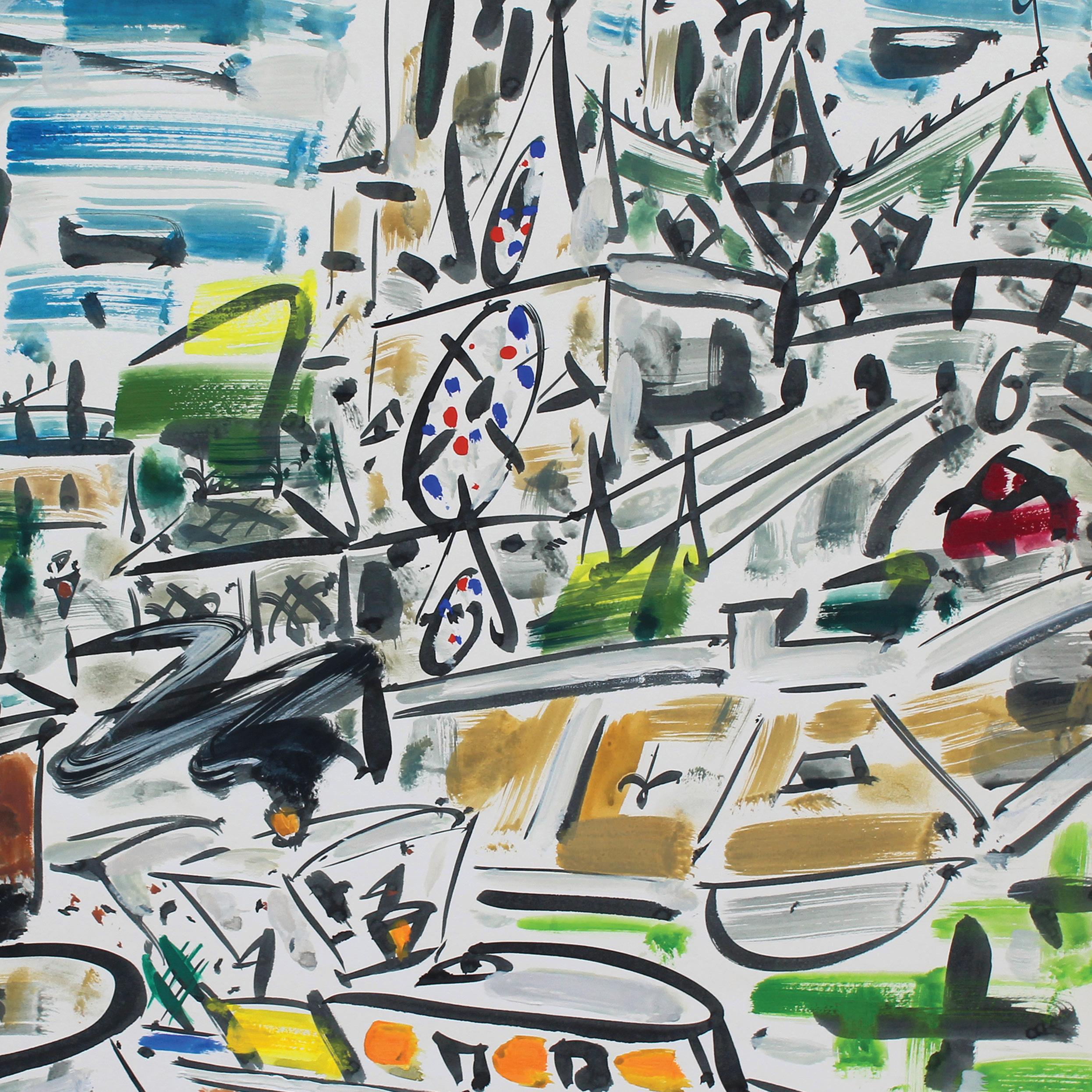
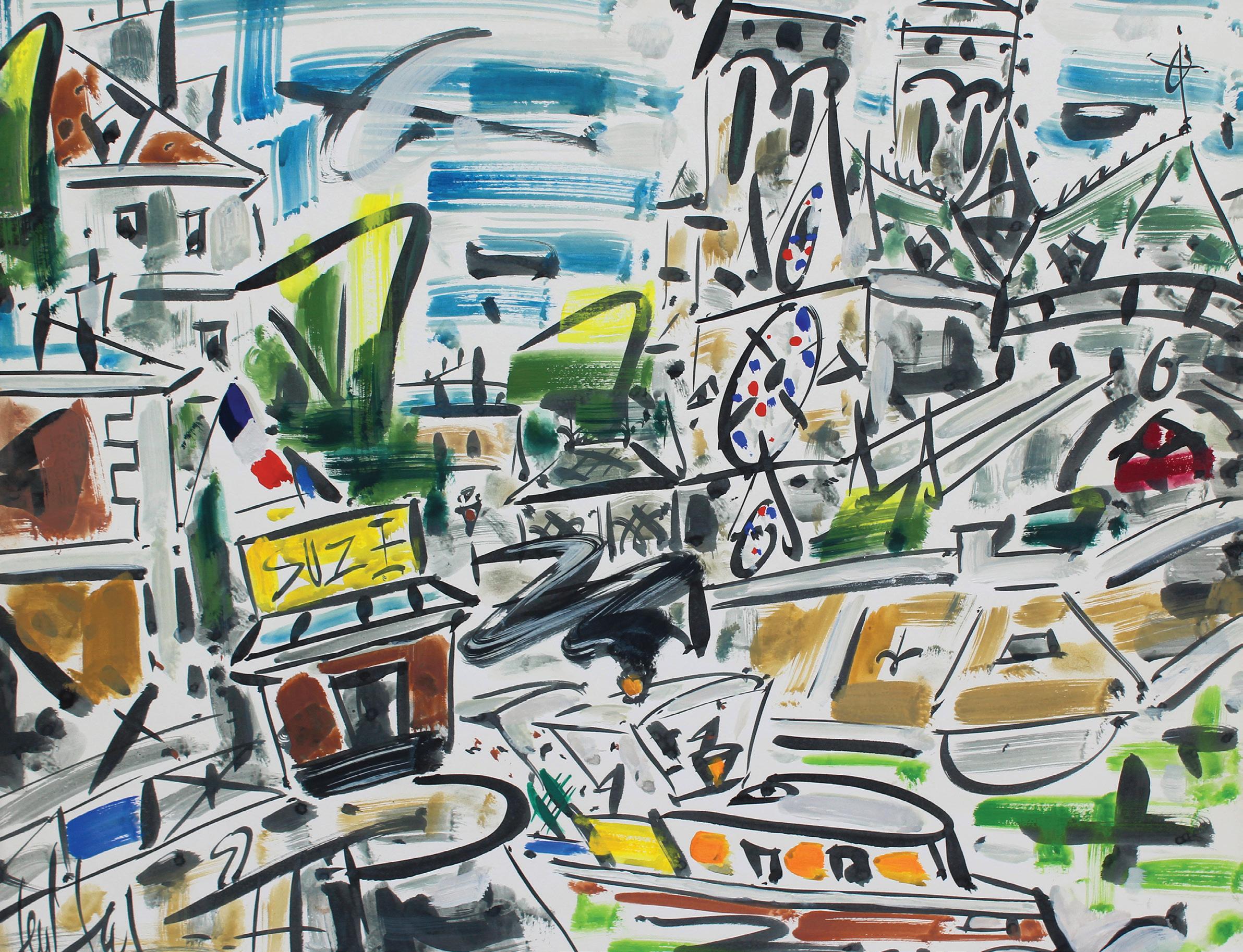
Gen Paul | La Seine a Notre Dame gouache on paper | 19 3/4 x 25 1/2 in. | FG© 140014
Gilles GorritiGilles Gorriti(1939 - 2013)
Gorriti Gorriti2013)
Gilles
Gorriti, an avid disciple of the French Modernist movement, was born in Paris in 1939. The son of renowned artist Paul Aïzpiri, Gorriti grew up observing and learning from his father. His formal education began in 1955 at the Atelier de la Grande Chaumière, and continued at the Académie Julian in Paris.
At just seventeen, Gorriti organized his first one-man exhibition at the Galerie Morval. The following year, 1958, he became a member of the Salon d’Automne, where he would continue to exhibit throughout his career. In 1962, he was invited to exhibit at the Salon de la Jeune Peinture. Later that year, in response to his widespread appeal and success, the city of Paris added one of his paintings to their influential collection. In 1965, his work appeared in the Fourth International Exhibition of Figurative Art in Japan.
Wally Findlay Galleries first exhibited the work of Gorriti in 1983 in Paris. The company’s East Hampton location chose Gorriti as the artist for its Inaugural Exhibition in May of 1999. Since then Findlay Galleries has hosted exhibitions of the artist’s work at their historical Chicago, Palm Beach and New York locations. Gorriti’s one-man shows have received fame and success throughout the world, especially in France, Geneva, New York, Palm Beach, Los Angeles and Japan.
In addition to painting, Gorriti is an accomplished guitarist and piano player, reinforcing his belief that music and painting are intertwined. He believes that the two work together to assist in developing the creative process and often symbols of these influences can be discerned in his paintings. He is passionate about Flamenco and classical music and always has music playing while working in his atelier in Paris. Color is of the utmost importance to Gorriti, more so than subject matter. As a colorist, Gorriti is a virtuoso in using the full range of his palette. He creates both subtle, unobtrusive fragments of delicate tones alongside vibrantly orchestrated blocks of color, which demand attention. This striking interplay of colors is portrayed significantly and sets a stunning contrast to the generally serene subject matter, creating moods and stirring emotional responses from the viewer. His latest works highlight his genius as a colorist and as a master of texture.
Gilles Gorriti
Eventail rouge
|
mixed media on canvas | 31 7/8 x 25 9/16 in. | FG© 136584
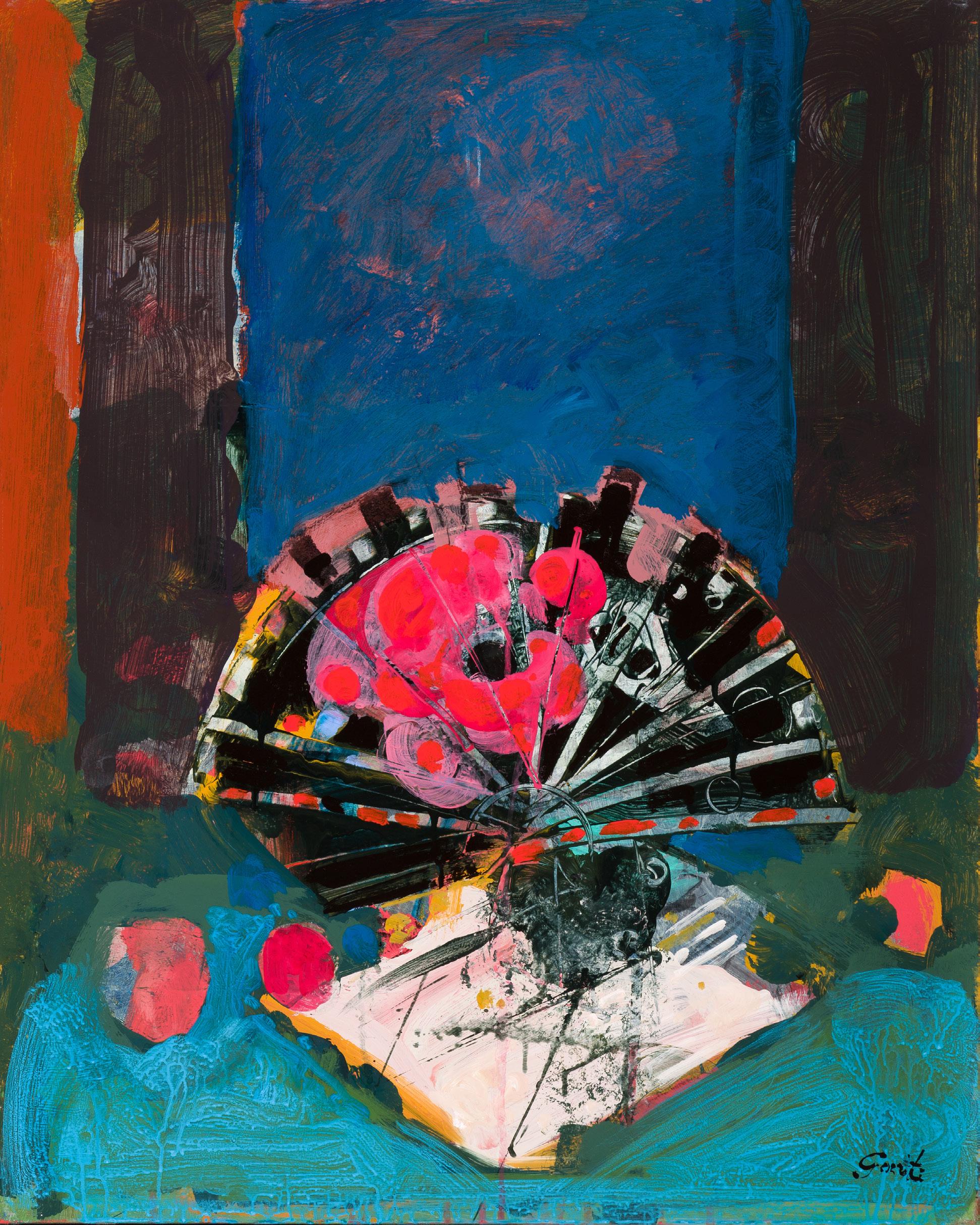
Gilles Gorriti | Les hortensias
mixed media on canvas

3/8 x 31 7/8 in.
FG© 132197
39
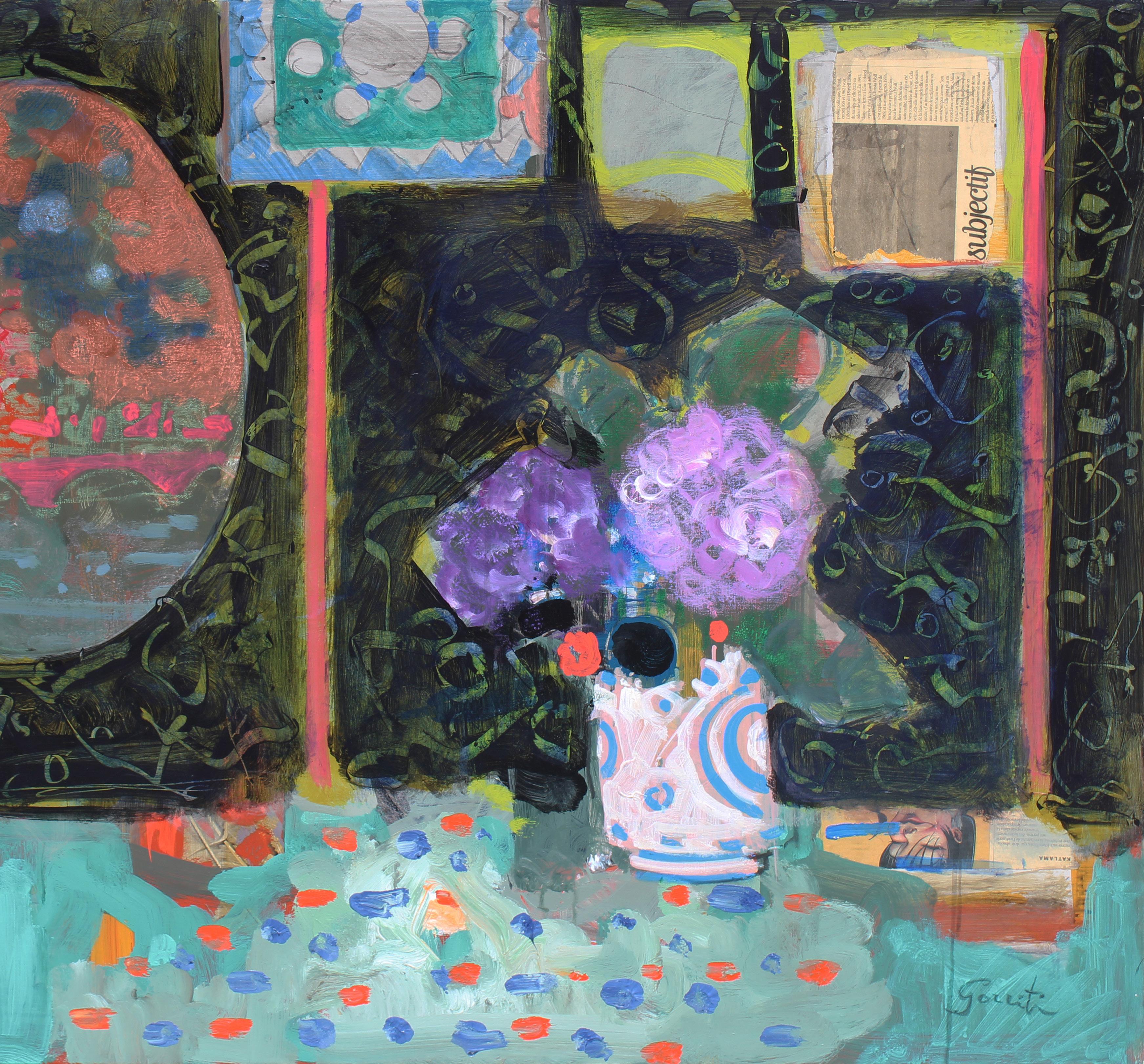

Gilles Gorriti | La partition mixed media on canvas | 39 3/8 x 31 7/8 in. | FG© 133325
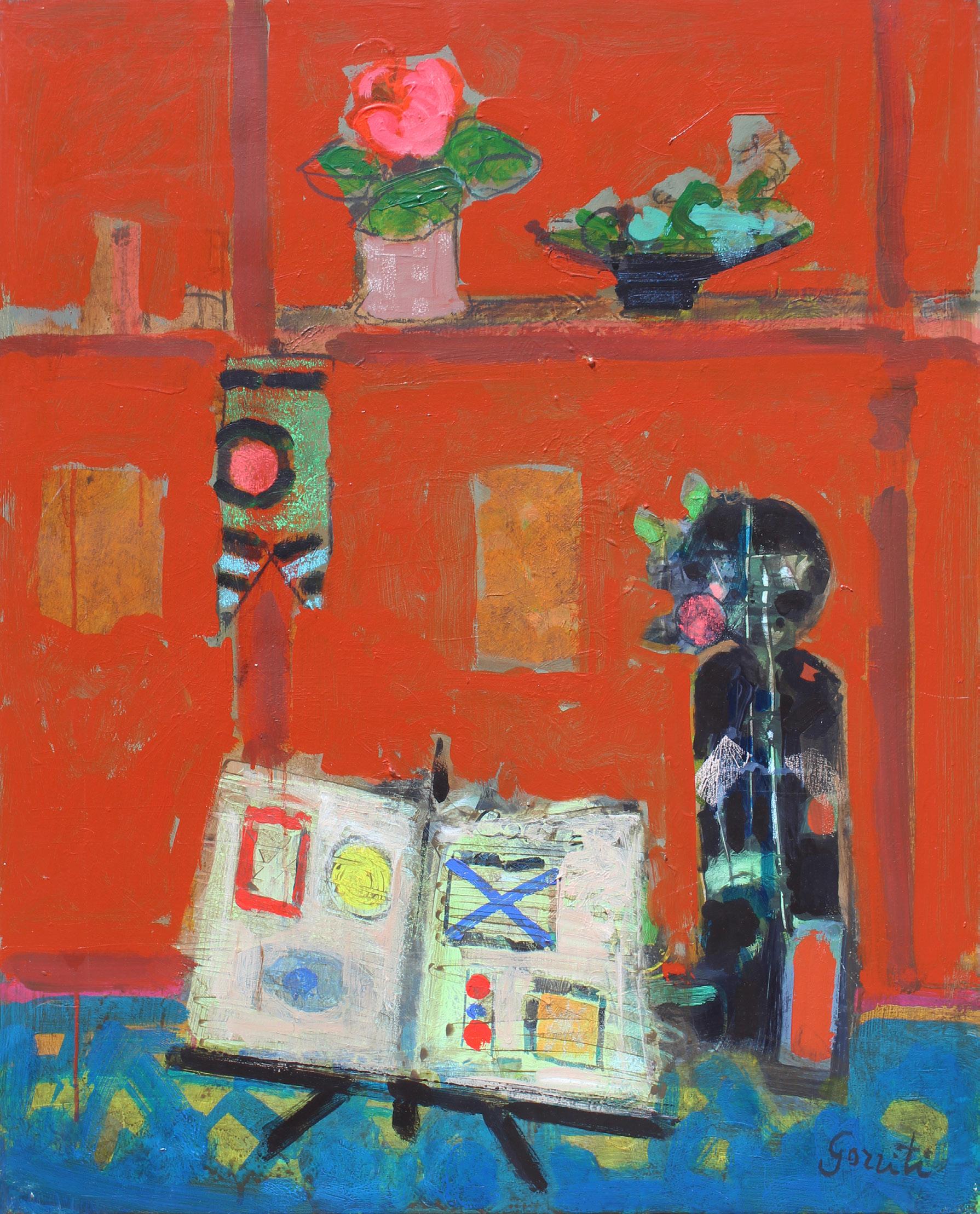
Gilles Gorriti | La poupee de bois mixed media on canvas | 31 7/8 x 25 9/16 in. | FG© 132212

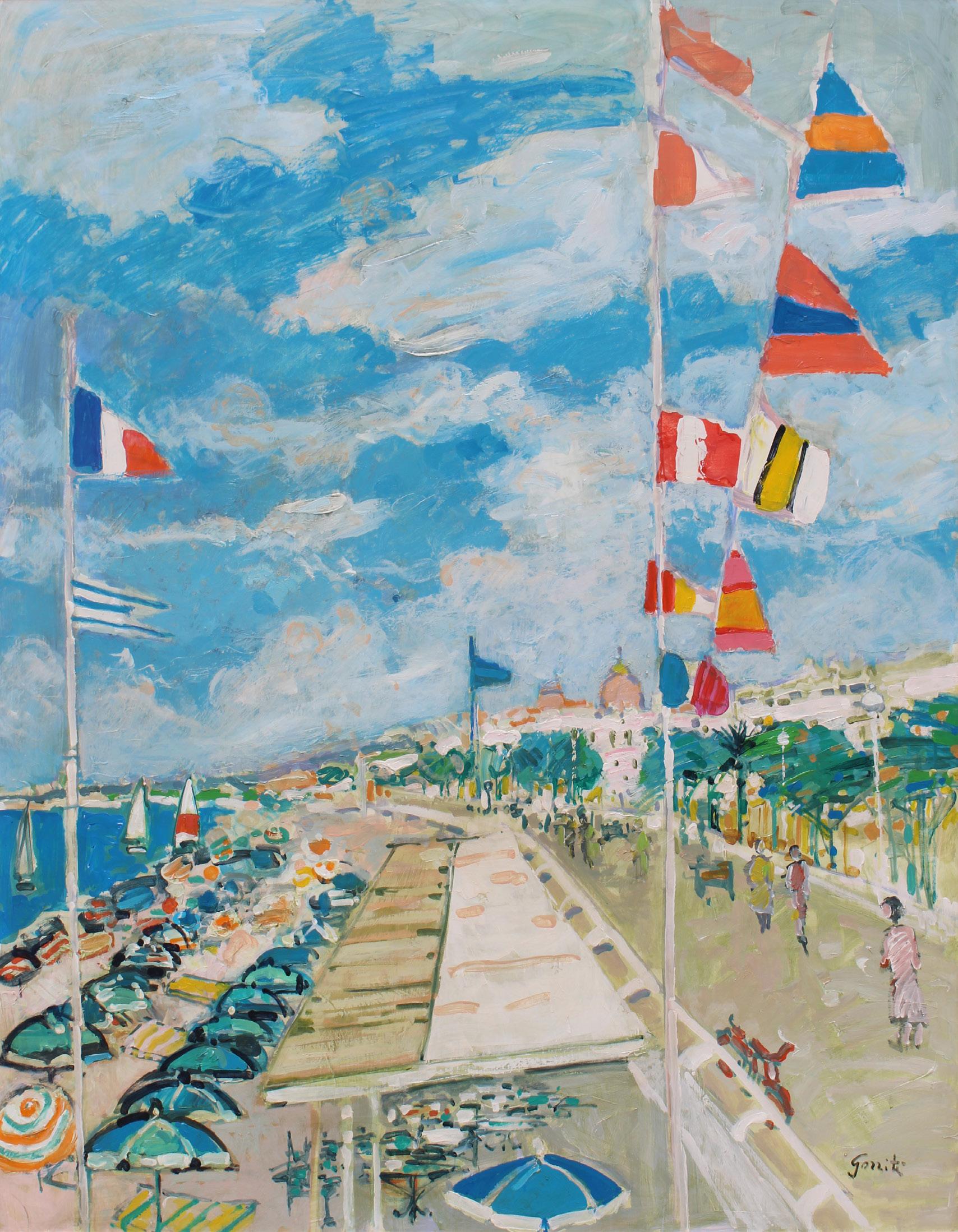
Gilles Gorriti | Nice, 1984 oil on canvas | 57 1/2 x 45 in. | FG© 139727

Gilles Gorriti | La Croisette a Cannes,1985 oil on canvas 35 1/4 x 45 3/8 in. FG© 140467
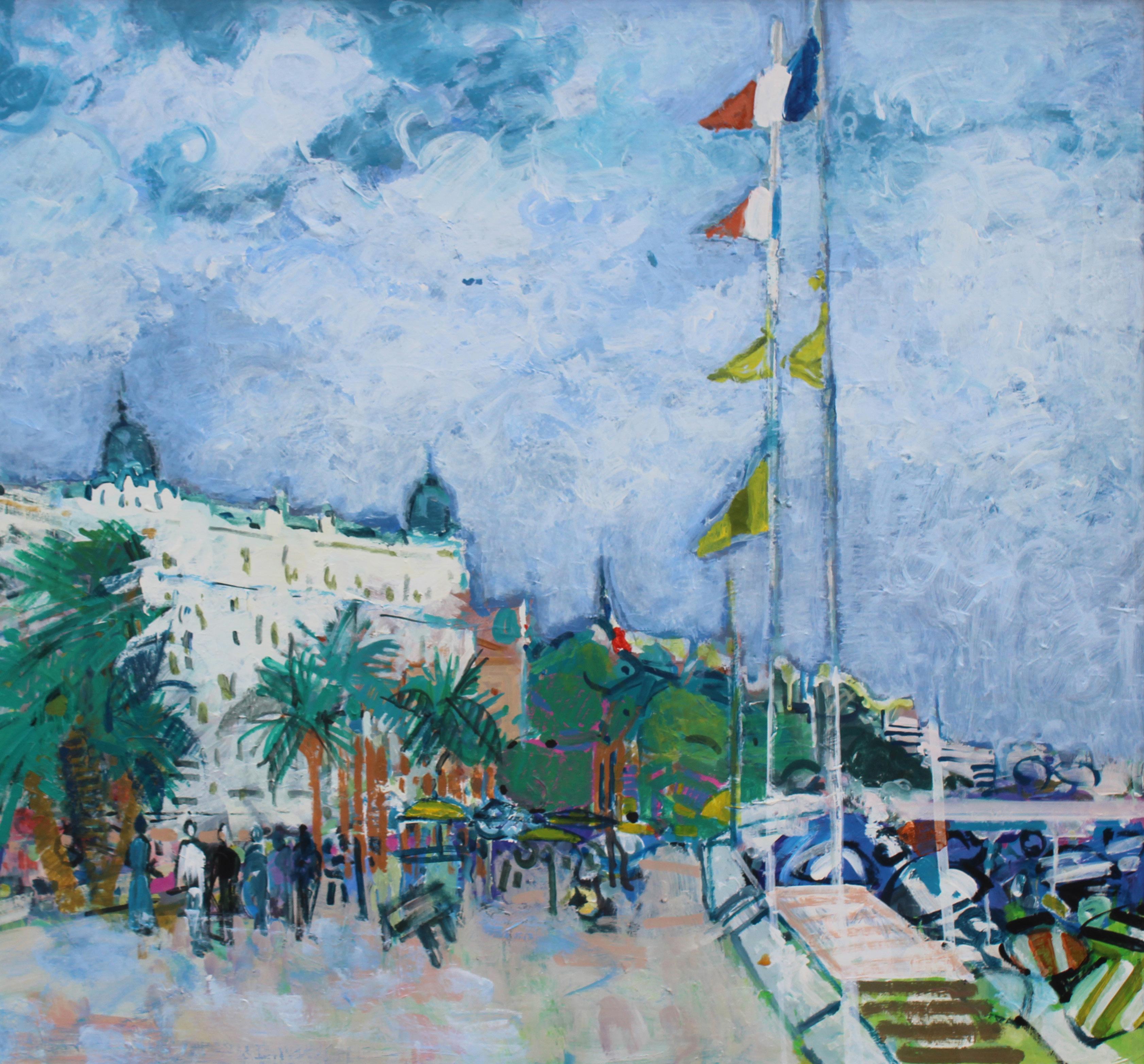
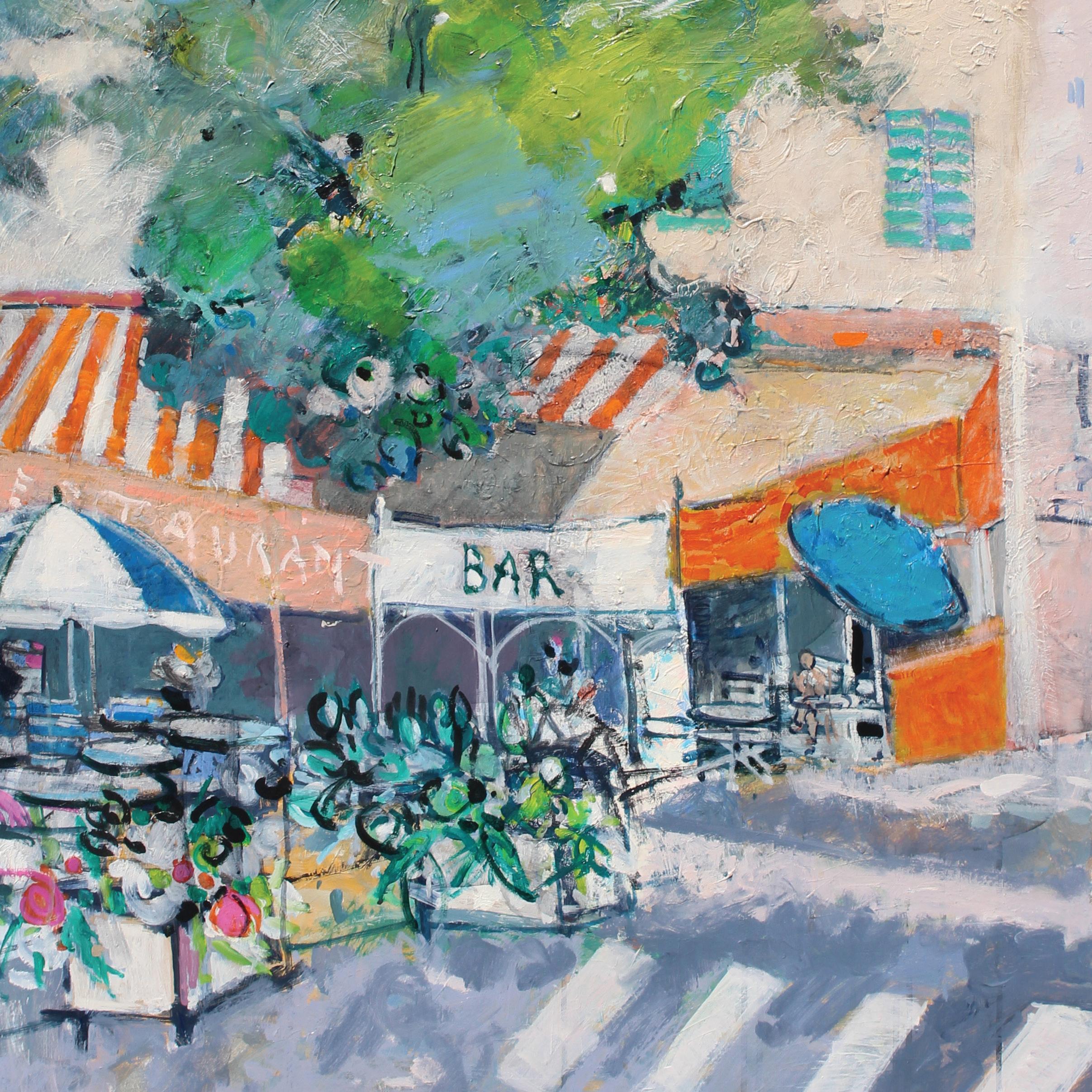
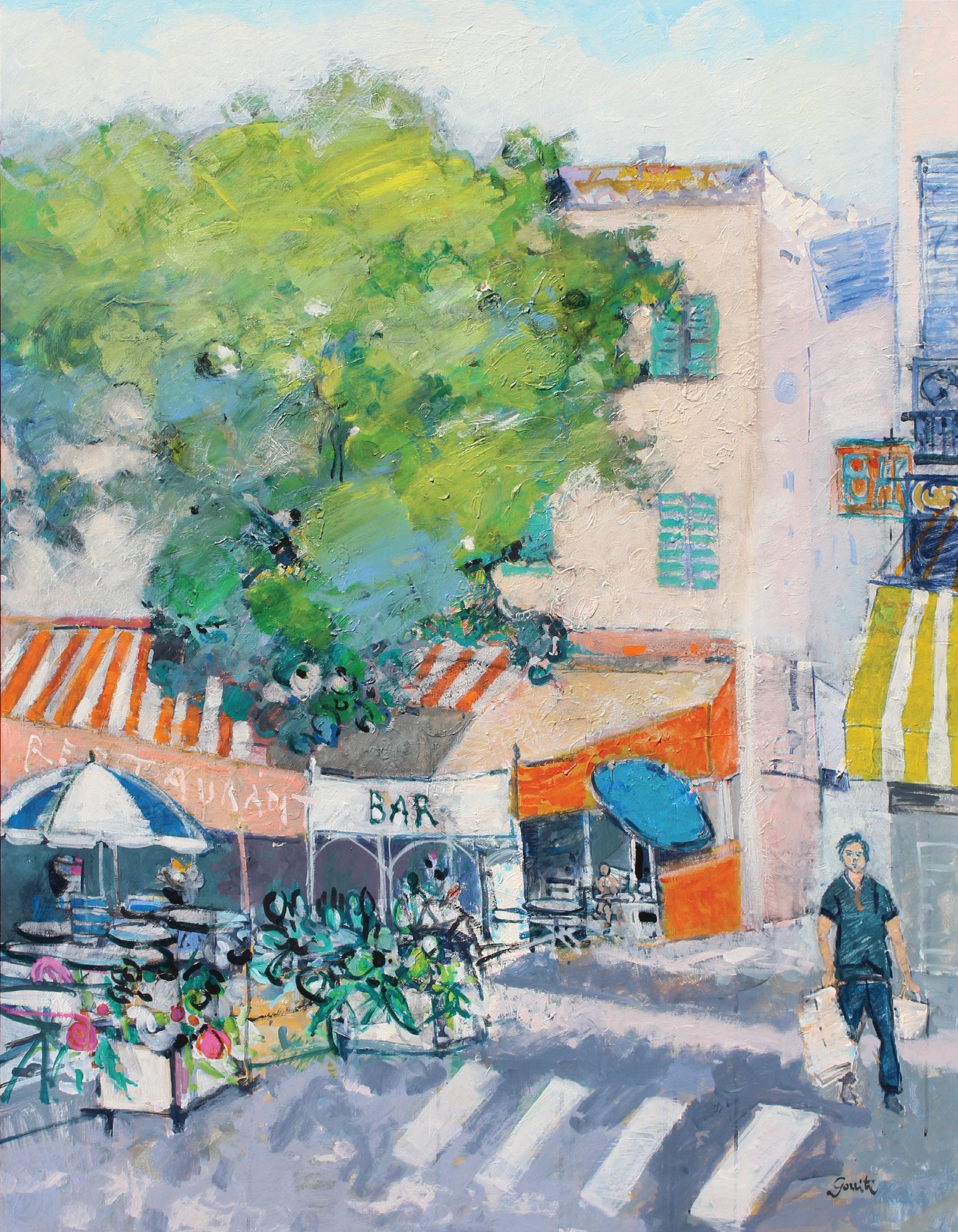
Gilles Gorriti | Terrasse de cafe oil on canvas | 57 1/2 x 45 in. | FG© 140220
Andre AndreLhote (1885 -
Lhote Lhote - 1962)
André Lhote (born July 5, 1885, in Bordeaux, France) was a French painter, sculptor, writer, and educator who was a prominent critic and teacher of modern art.
Lhote studied decorative sculpture at the École des Beaux-Arts in Bordeaux from 1898 to 1904. In 1905 he took up painting, and a year later, he moved to Paris. Lhote initially painted colorful landscapes in a Fauvist style, but his mature works were painted in a Cubist manner.
Lhote joined the Section d’Or group in 1912, exhibiting at the Salon de la Section d’Or. He was alongside some of the fathers of modern art, including Gleizes, Villon, Duchamp, Metzinger, Picabia and La Fresnaye. The outbreak of the First World War interrupted his work, and after discharge from the army in 1917, he joined a group of cubist painters supported by Léonce Rosenberg.
As well as being an artist, Lhote enjoyed a successful career as a writer who articulated Cubist theories and as an educator who influenced a generation of French artists. In 1918, he co-founded Nouvelle Revue Française, the art journal to which he contributed articles on art theory until 1940. He taught at the Académie Notre-Dame des Champs from 1918 to 1920, and later taught at other Paris art schools—including the Académie de la Grande Chaumière. He also wrote important treatises on landscape painting (1939) and figure painting (1950). In 1922 he founded his own art school in Paris, the Académie Montparnasse. and
Lhote lectured extensively in France and other countries, including Belgium, England, Italy and, from the 1950s, also in Egypt and Brazil. His work was rewarded with the Grand Prix National de Peinture in 1955, and the UNESCO commission for sculpture appointed Lhote president of the International Association of Painters, Engravers and Sculptors.
Andre Lhote | Bouquet de fleurs dans un vase oil on canvas | 25/16 x 18 1/4 in. | FG© 135141

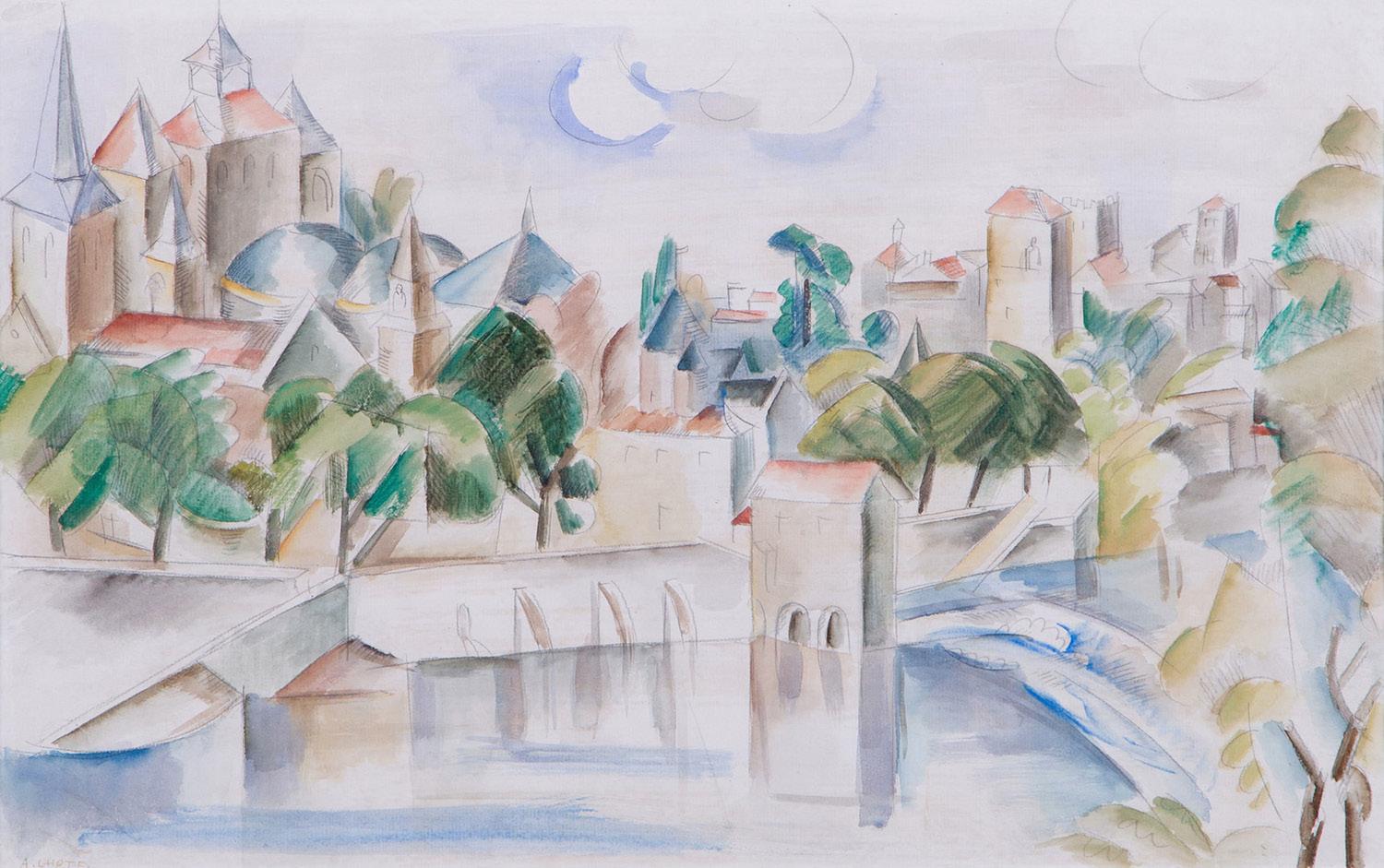
Andre Lhote | TAvignon watercolor on paper | 12 x 18 1/2 in. | FG© 135283
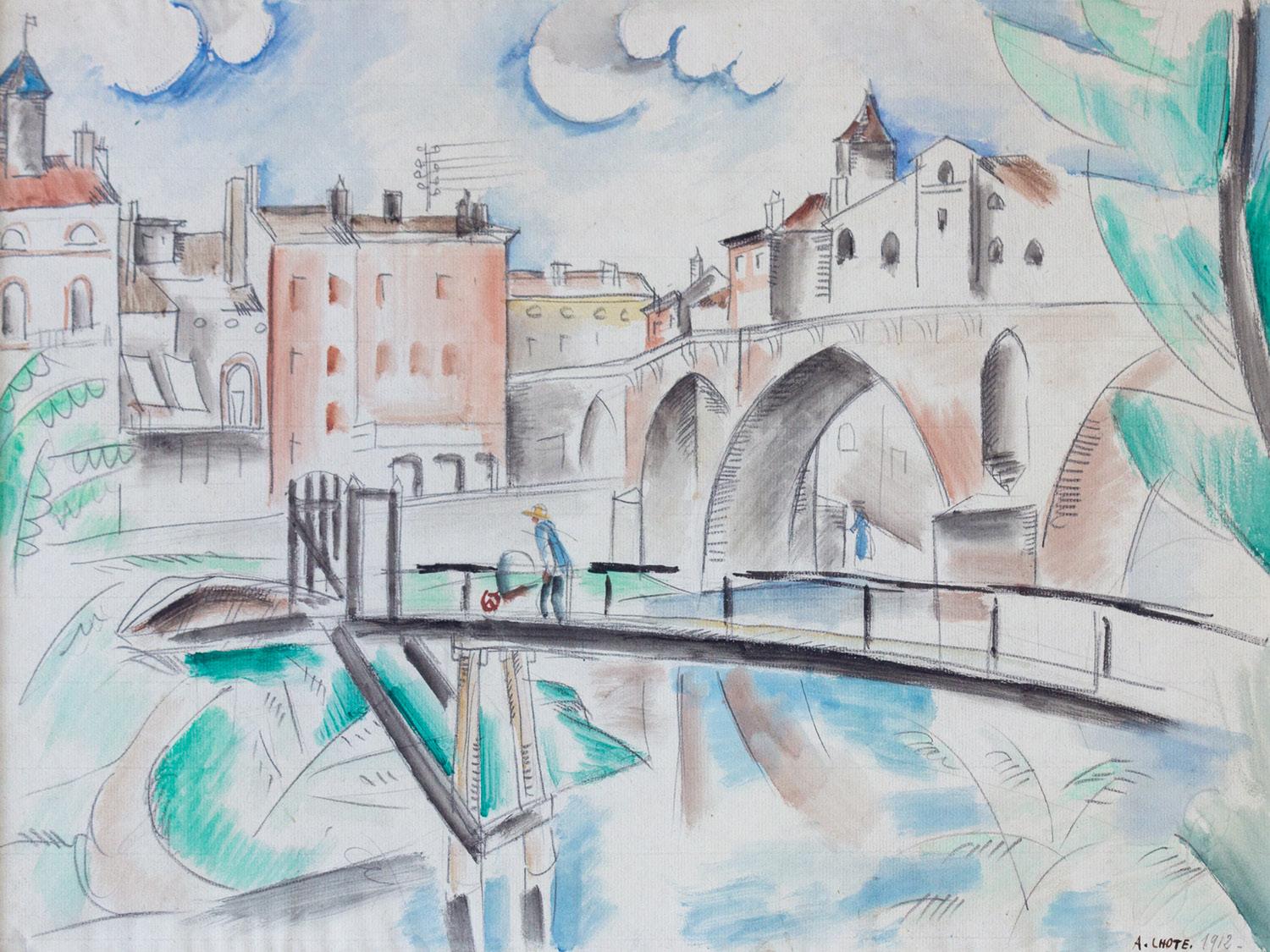
Andre Lhote | Passant sur le pont watercolor on paper | 12 9/16 x 19 5/8 in. | FG© 136097
EST. 1870
